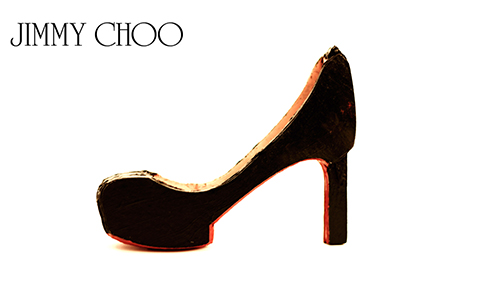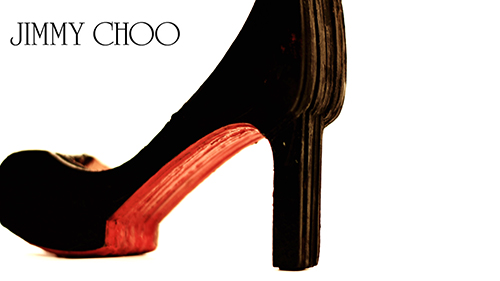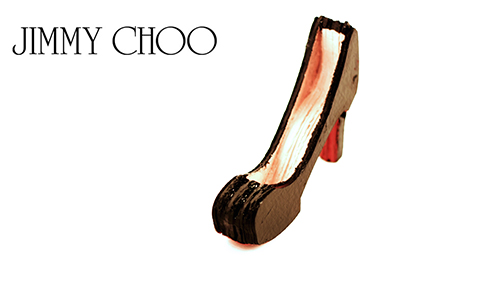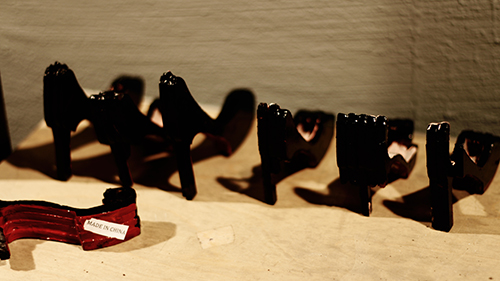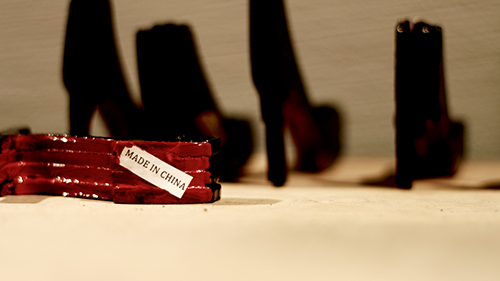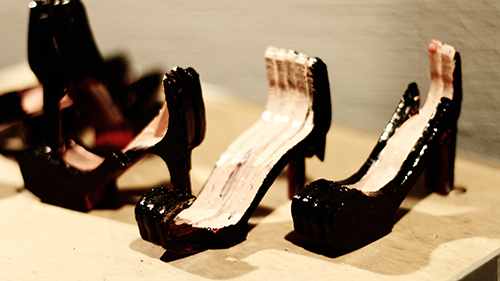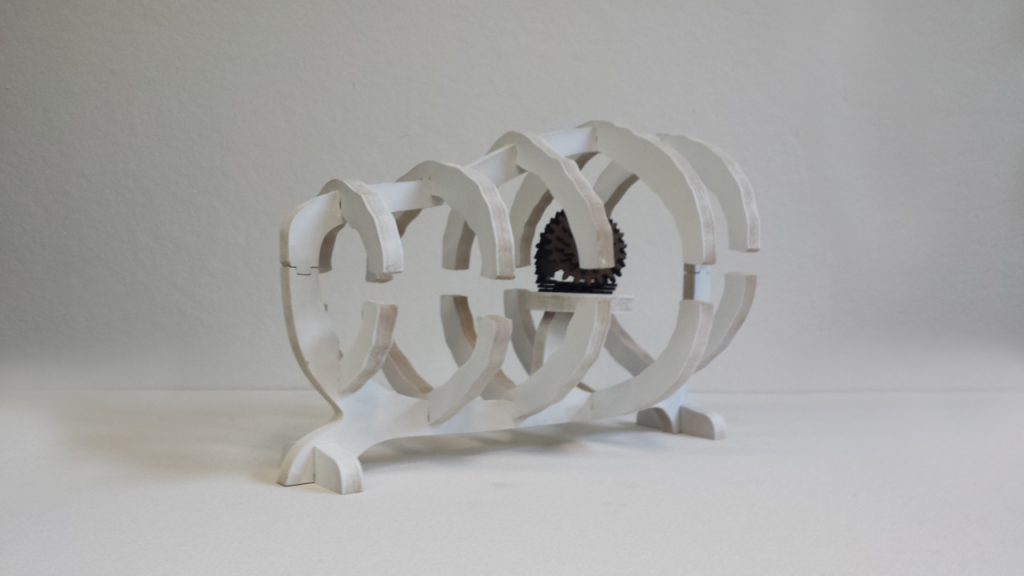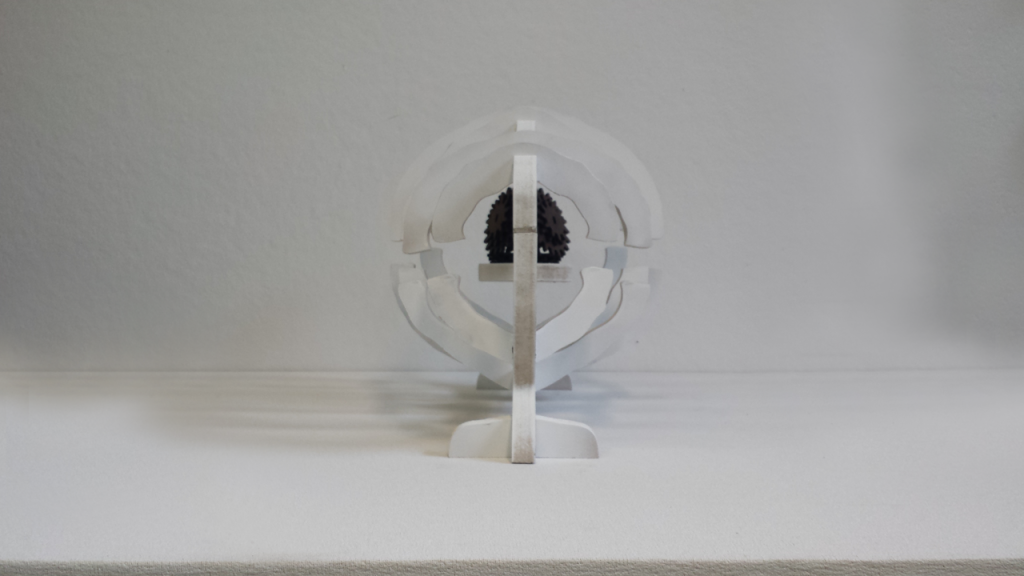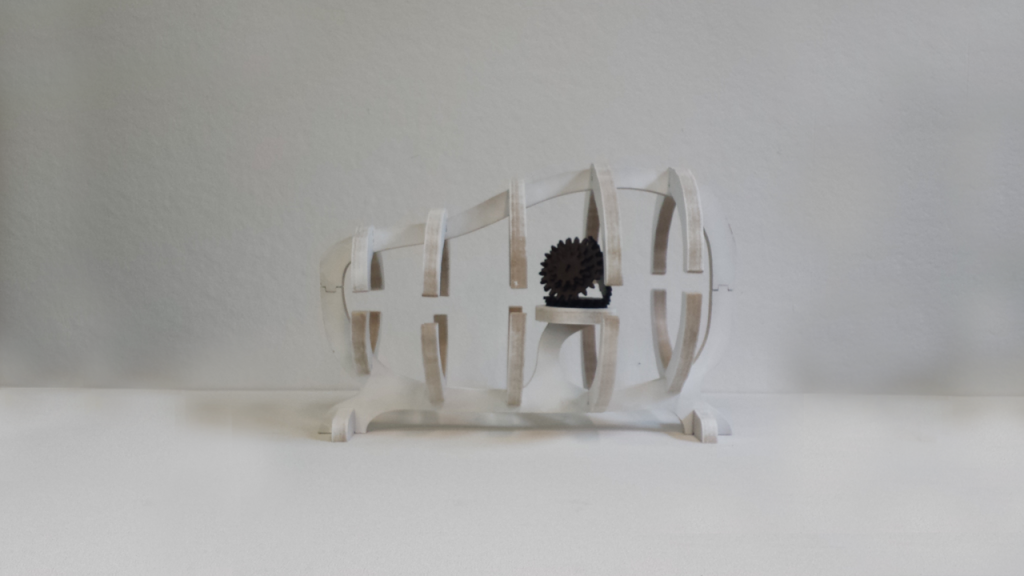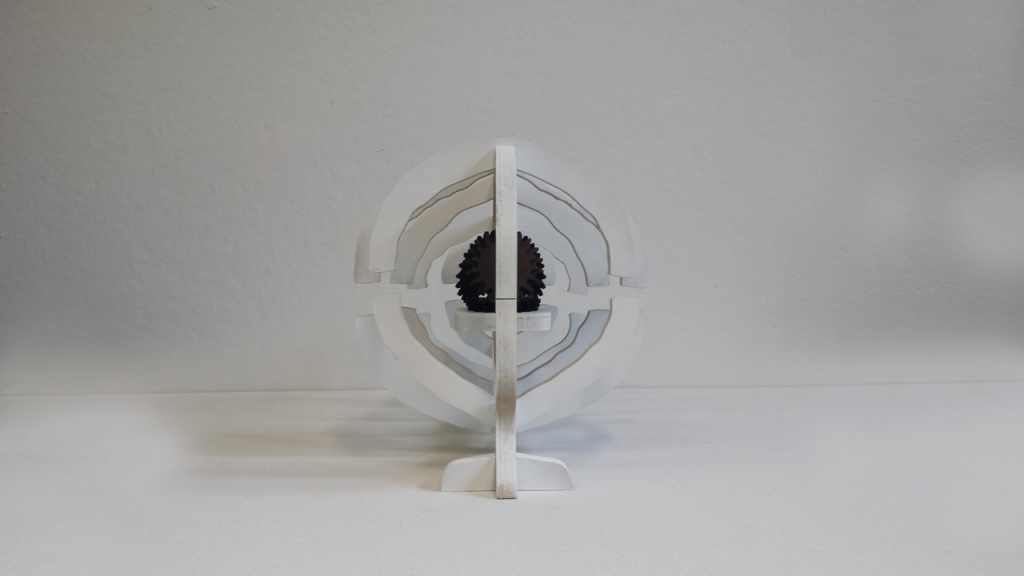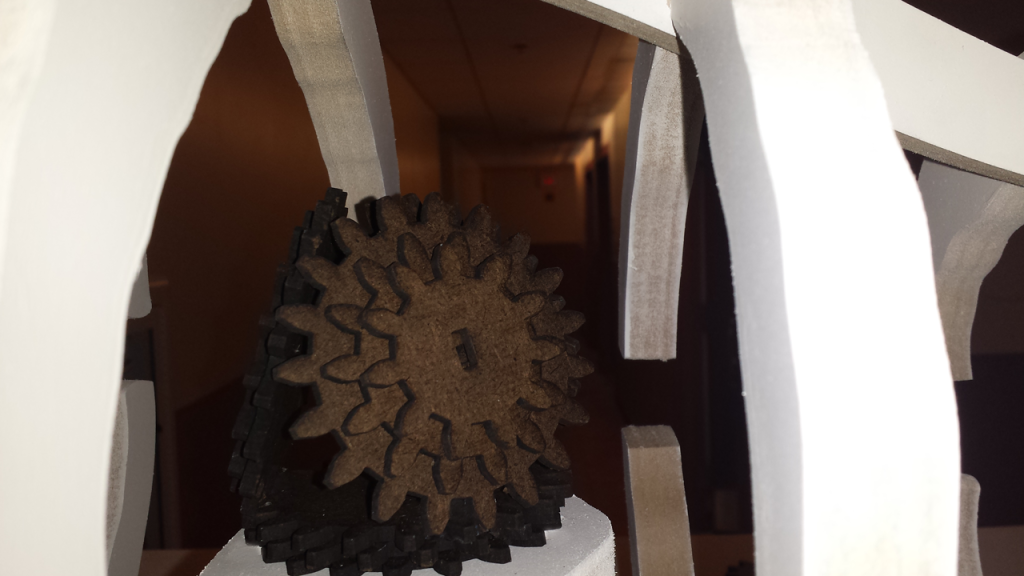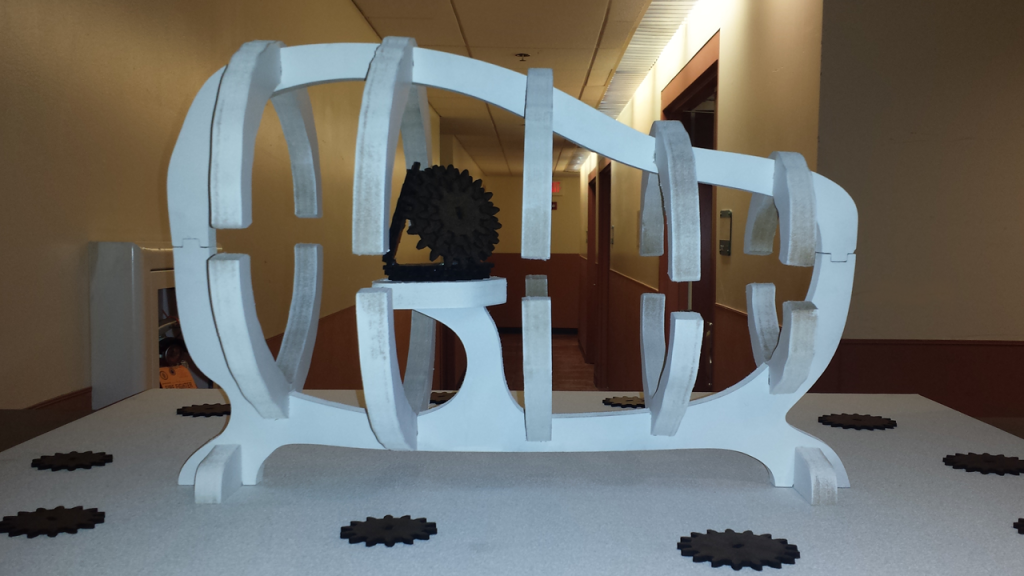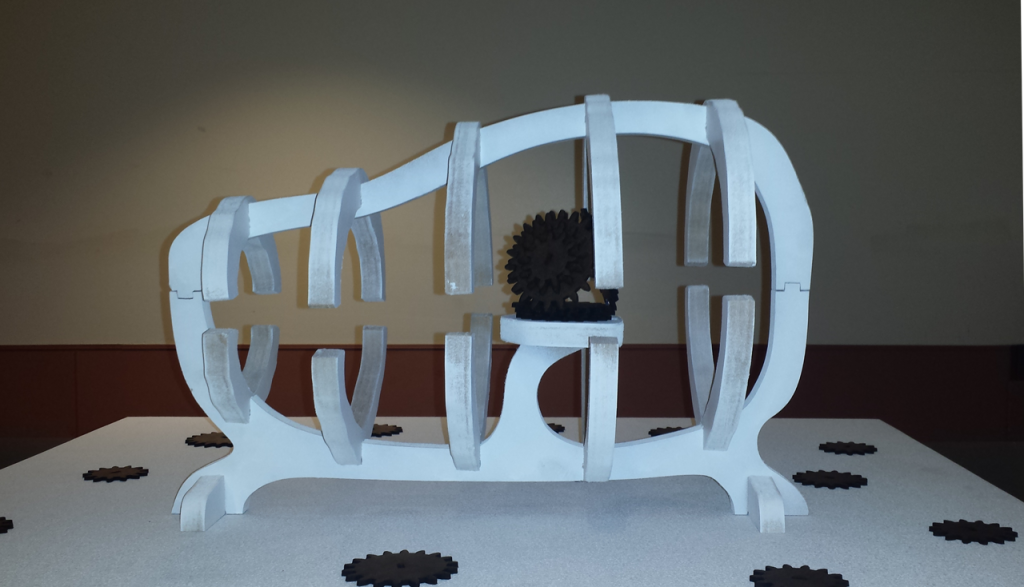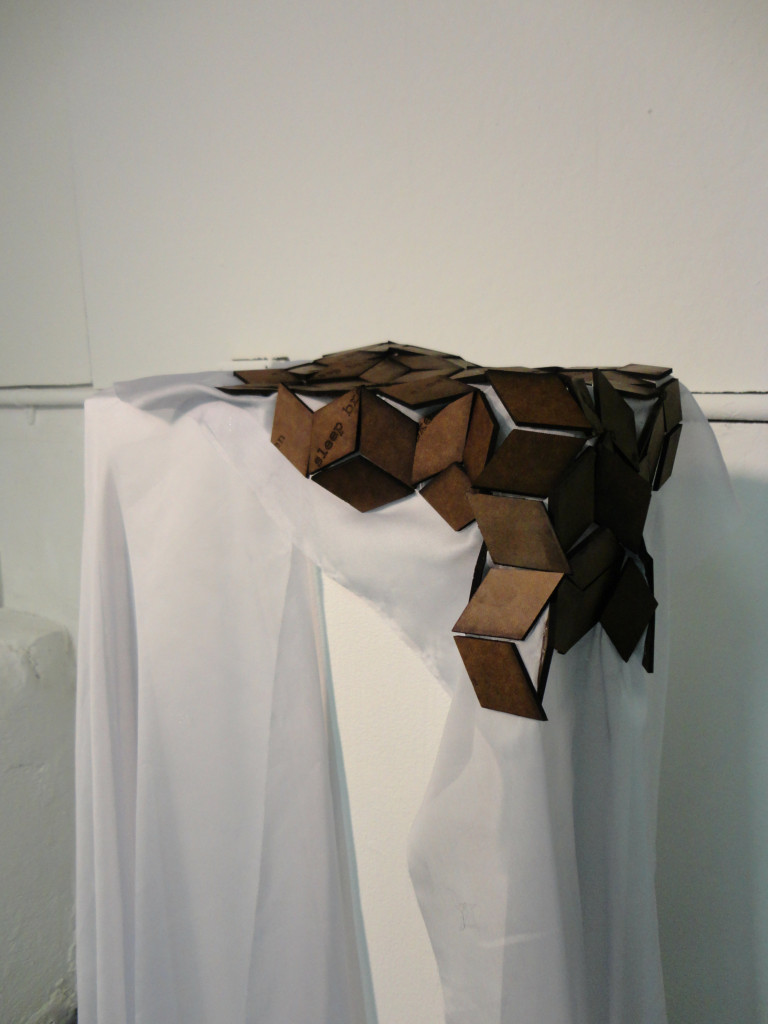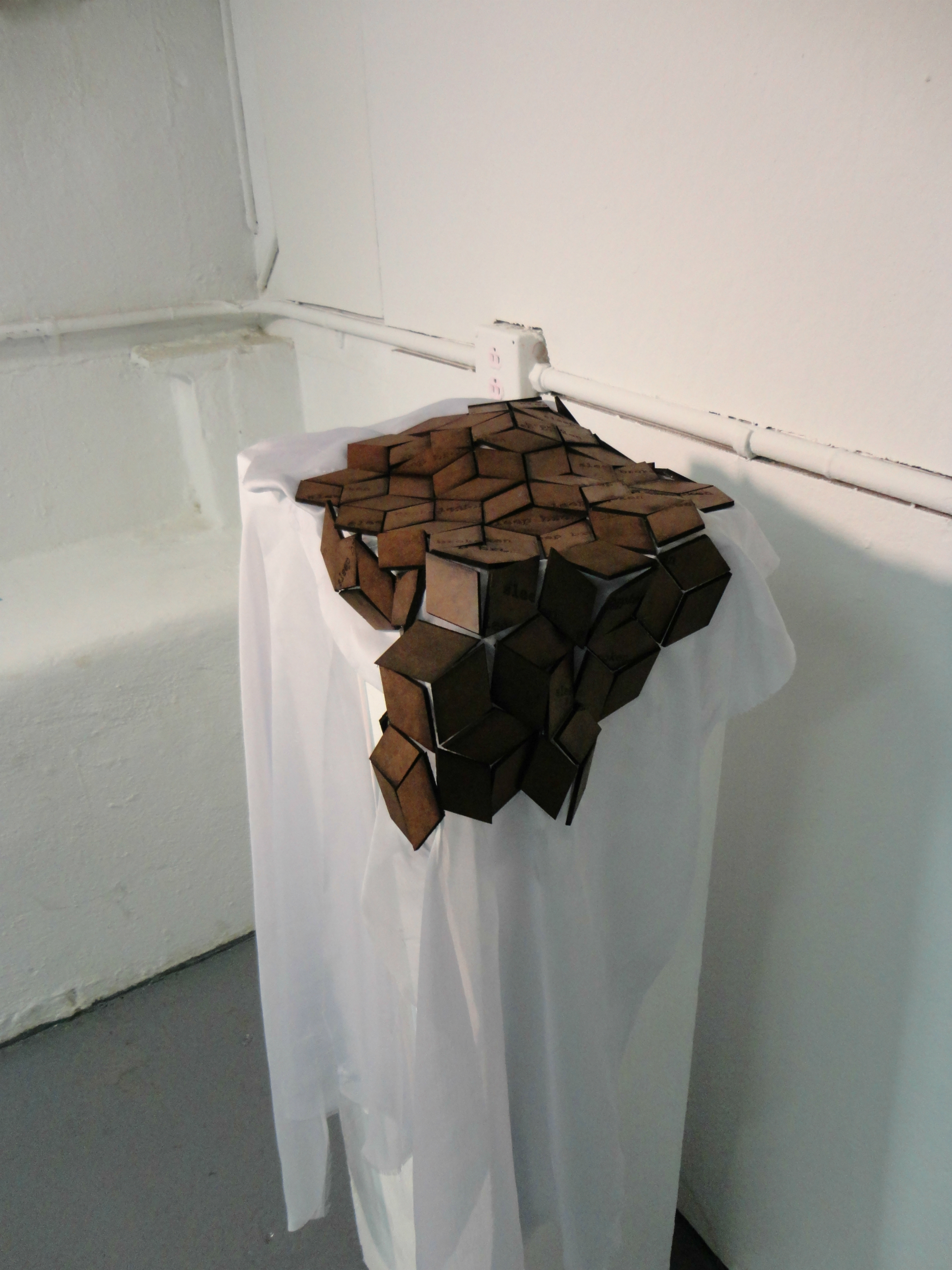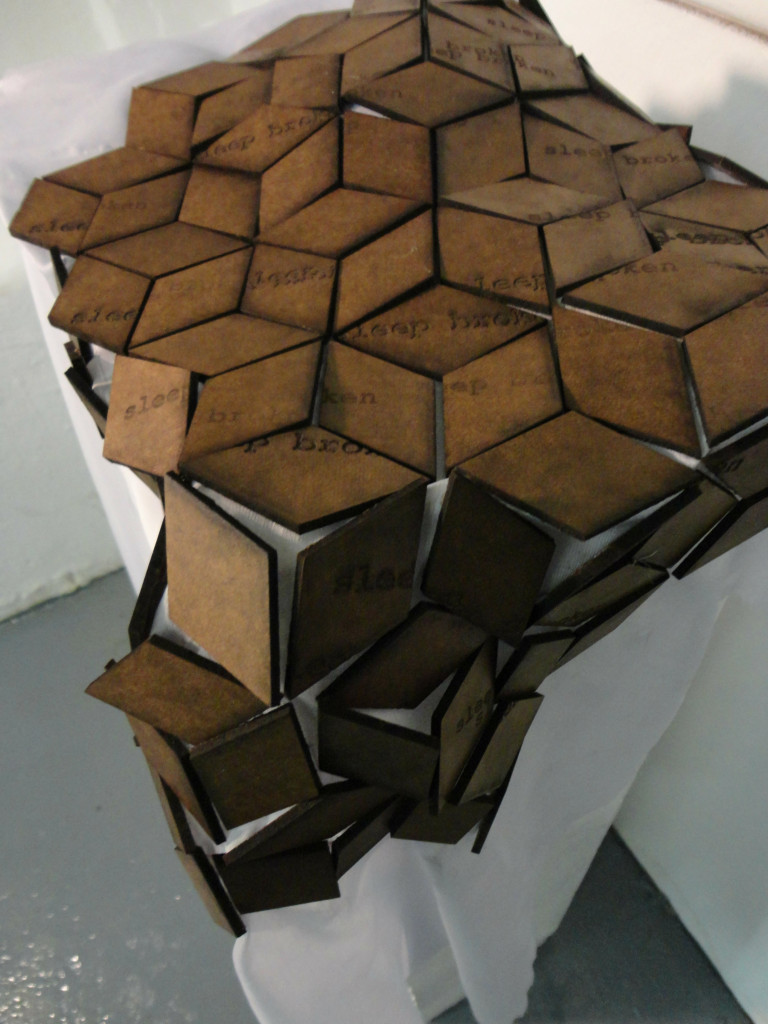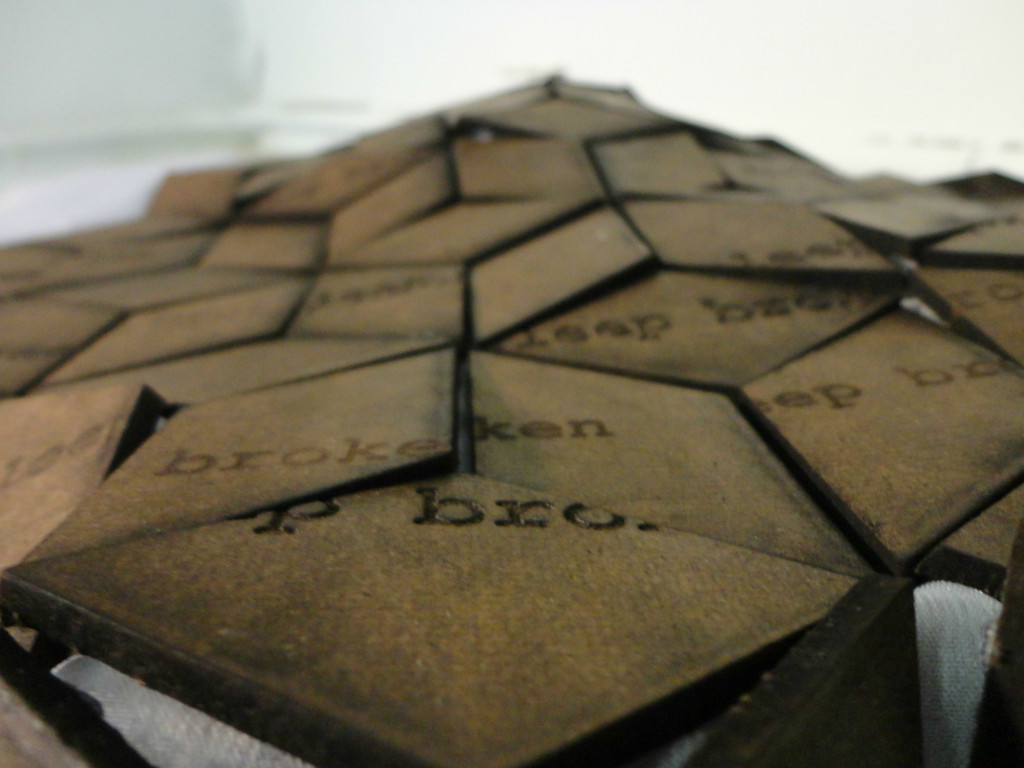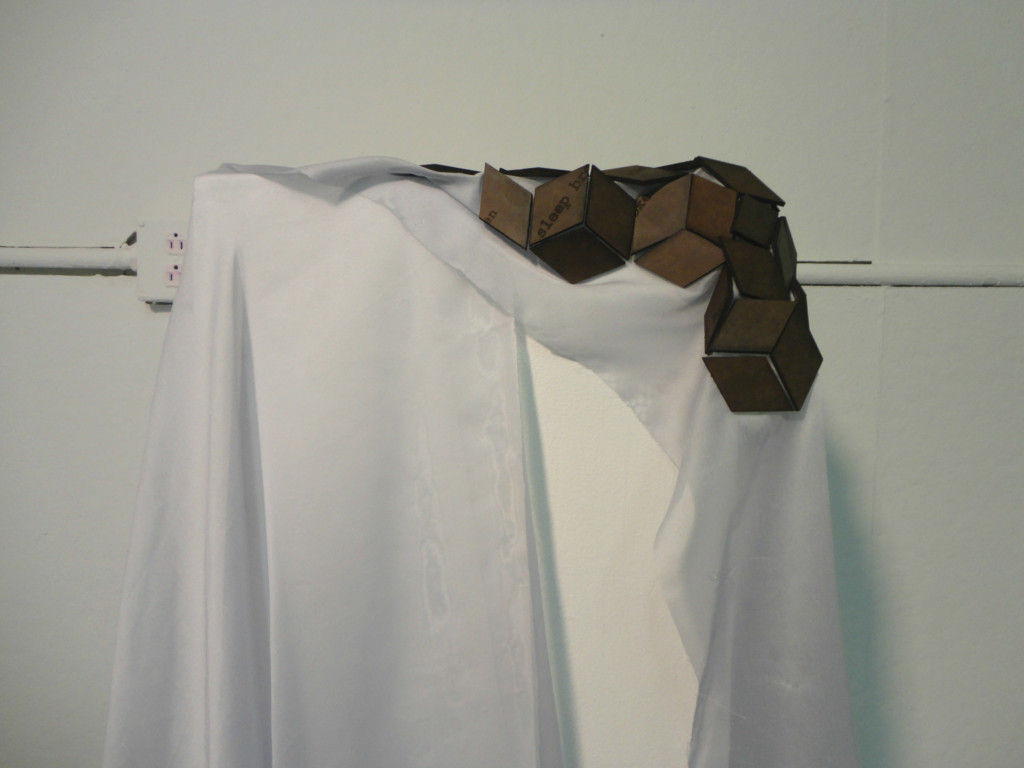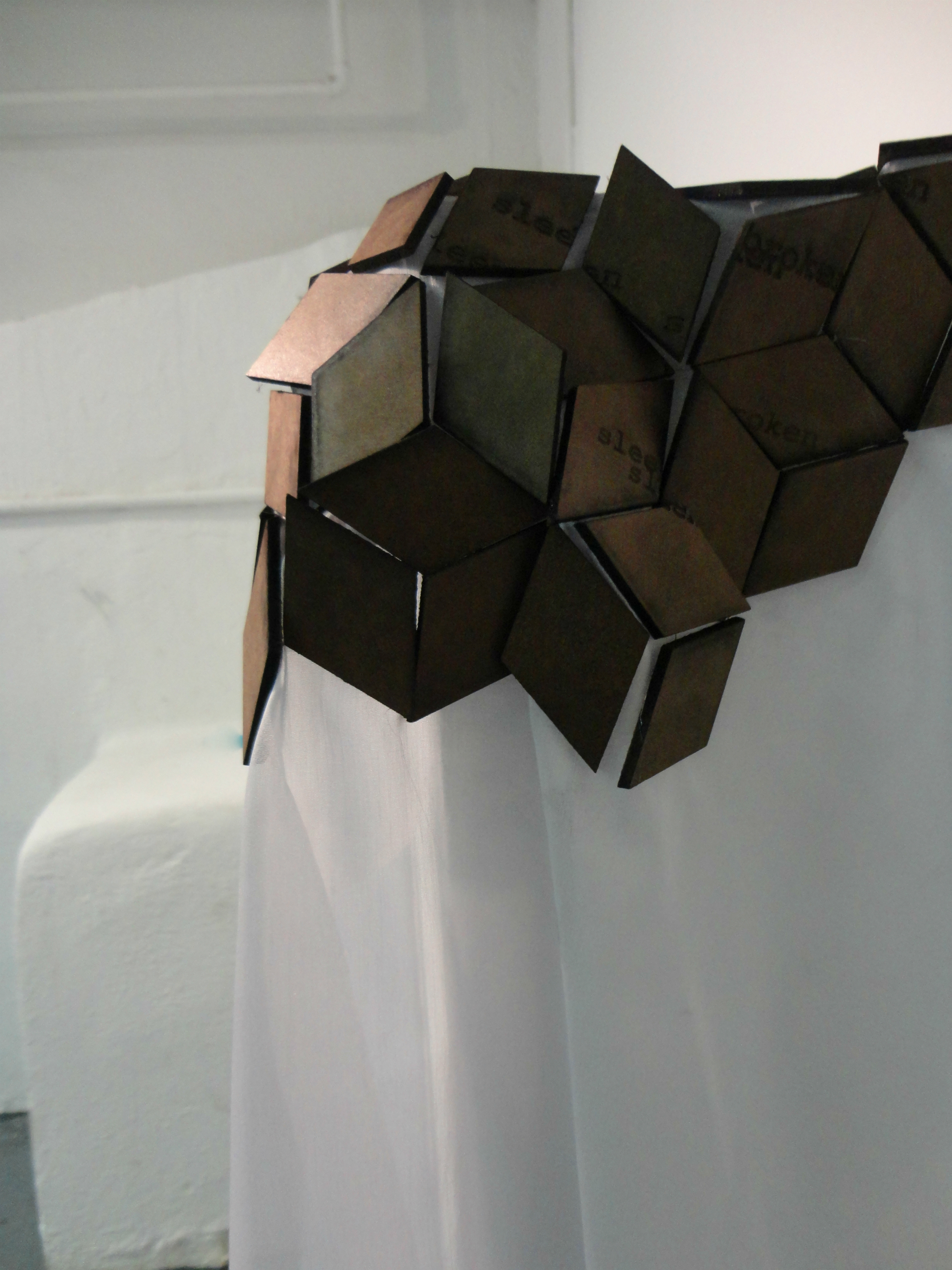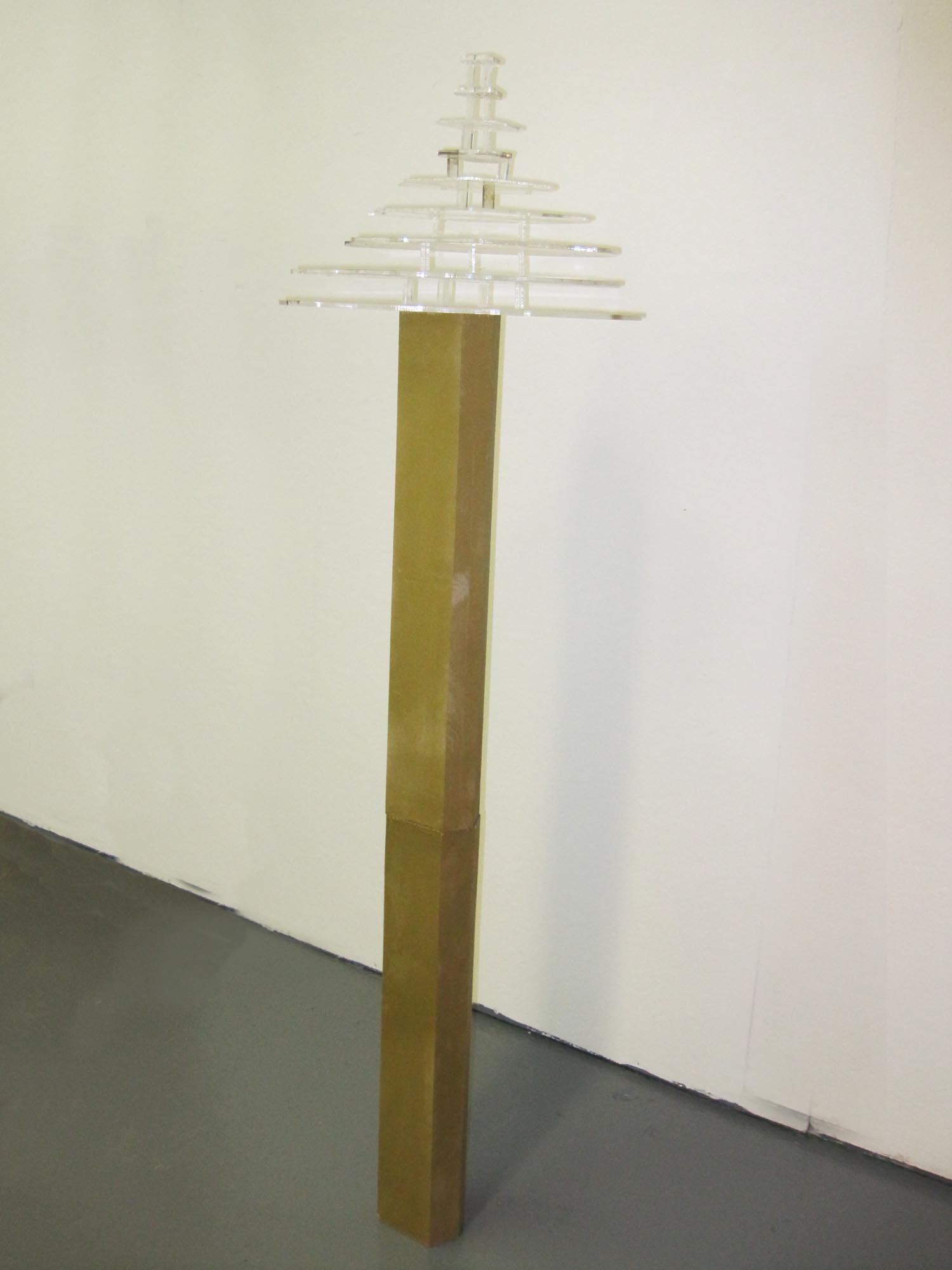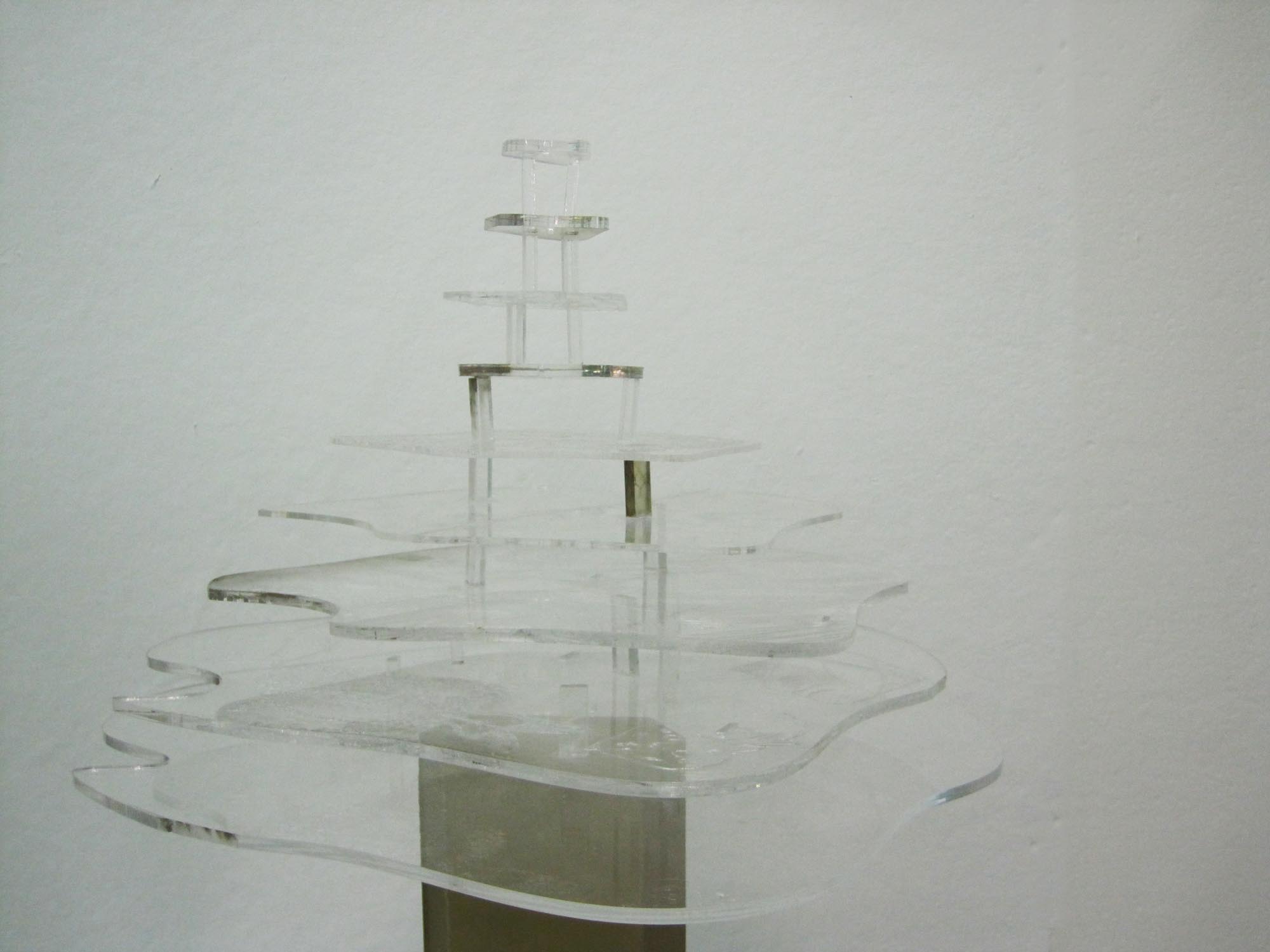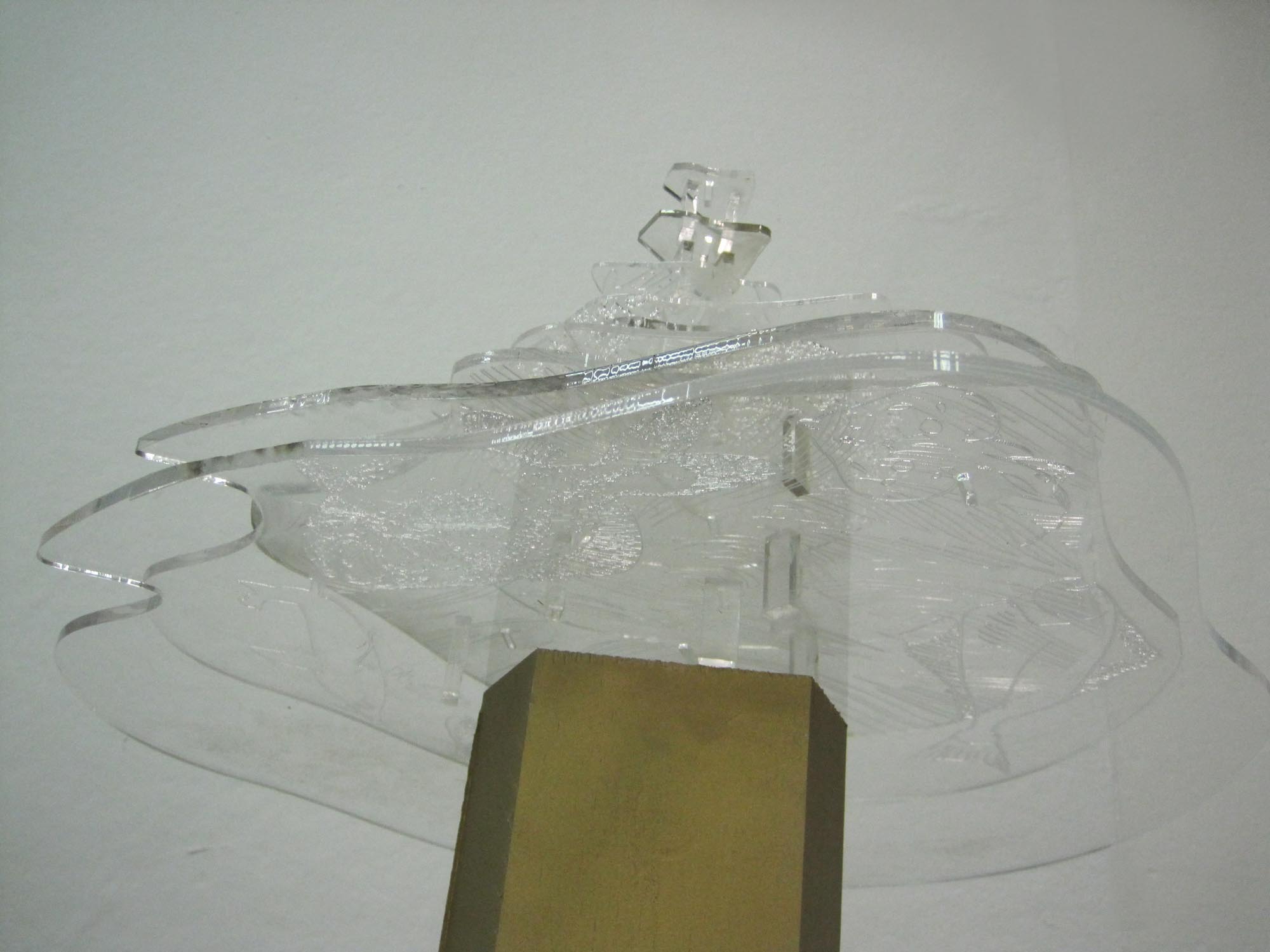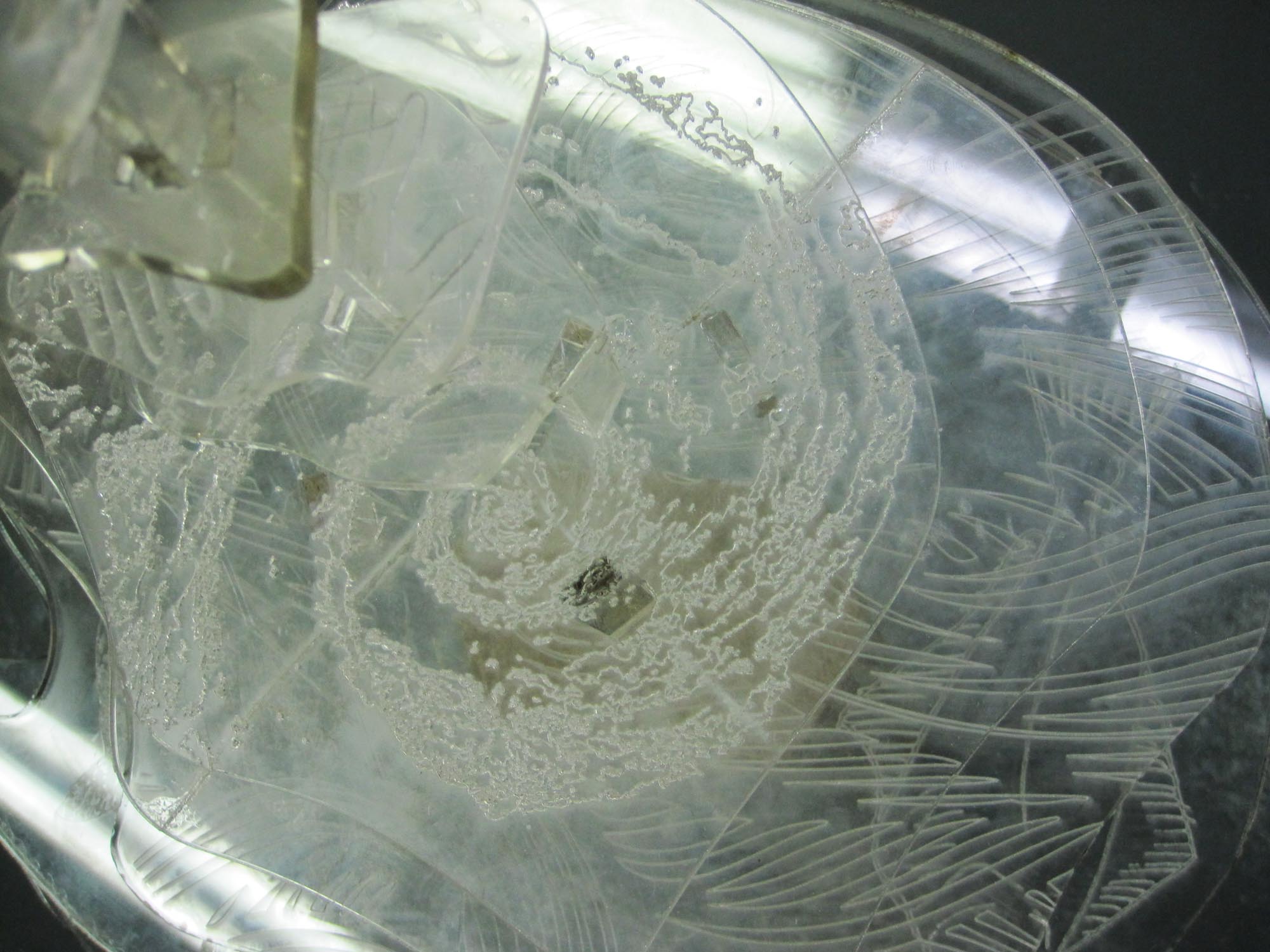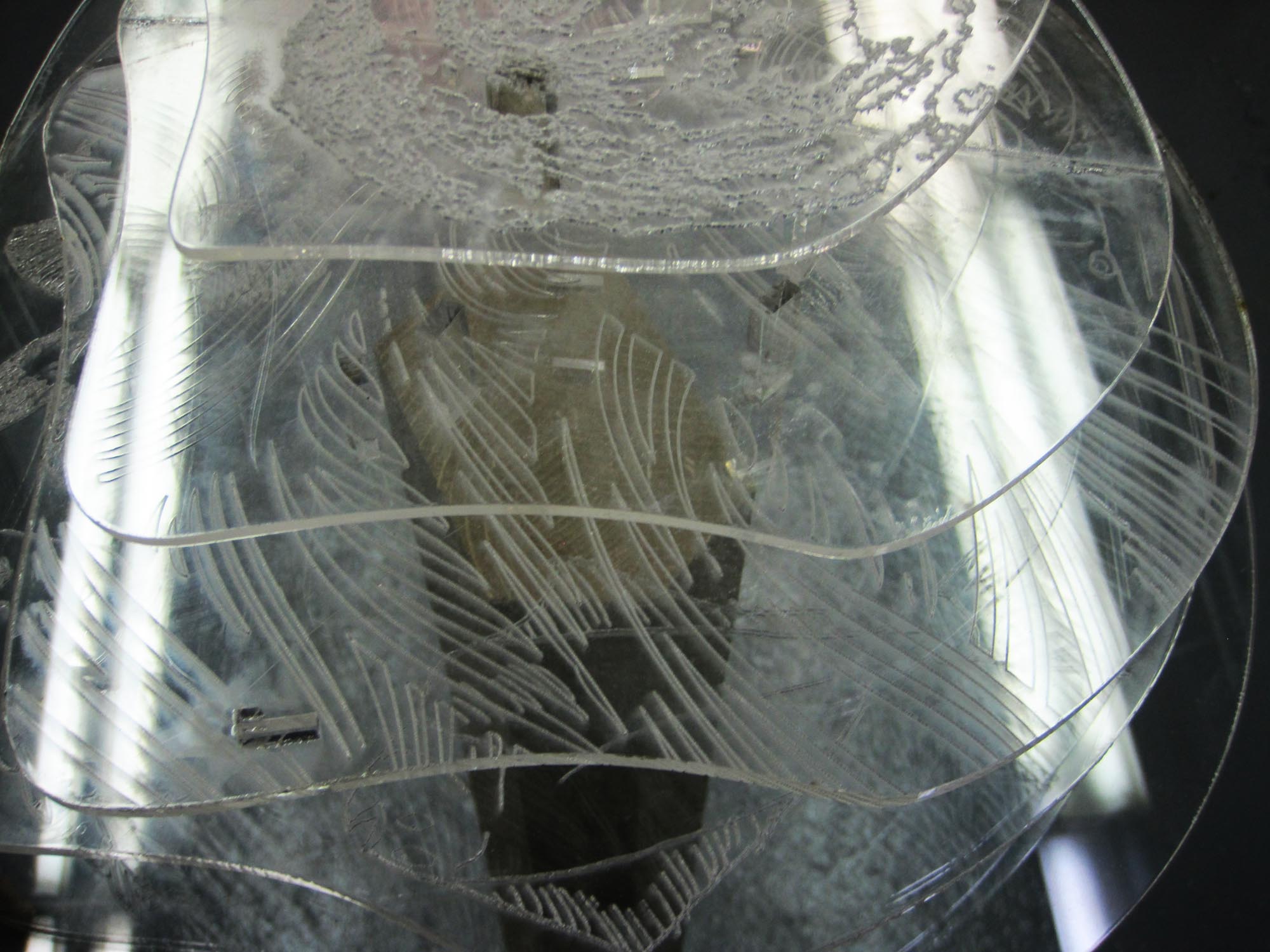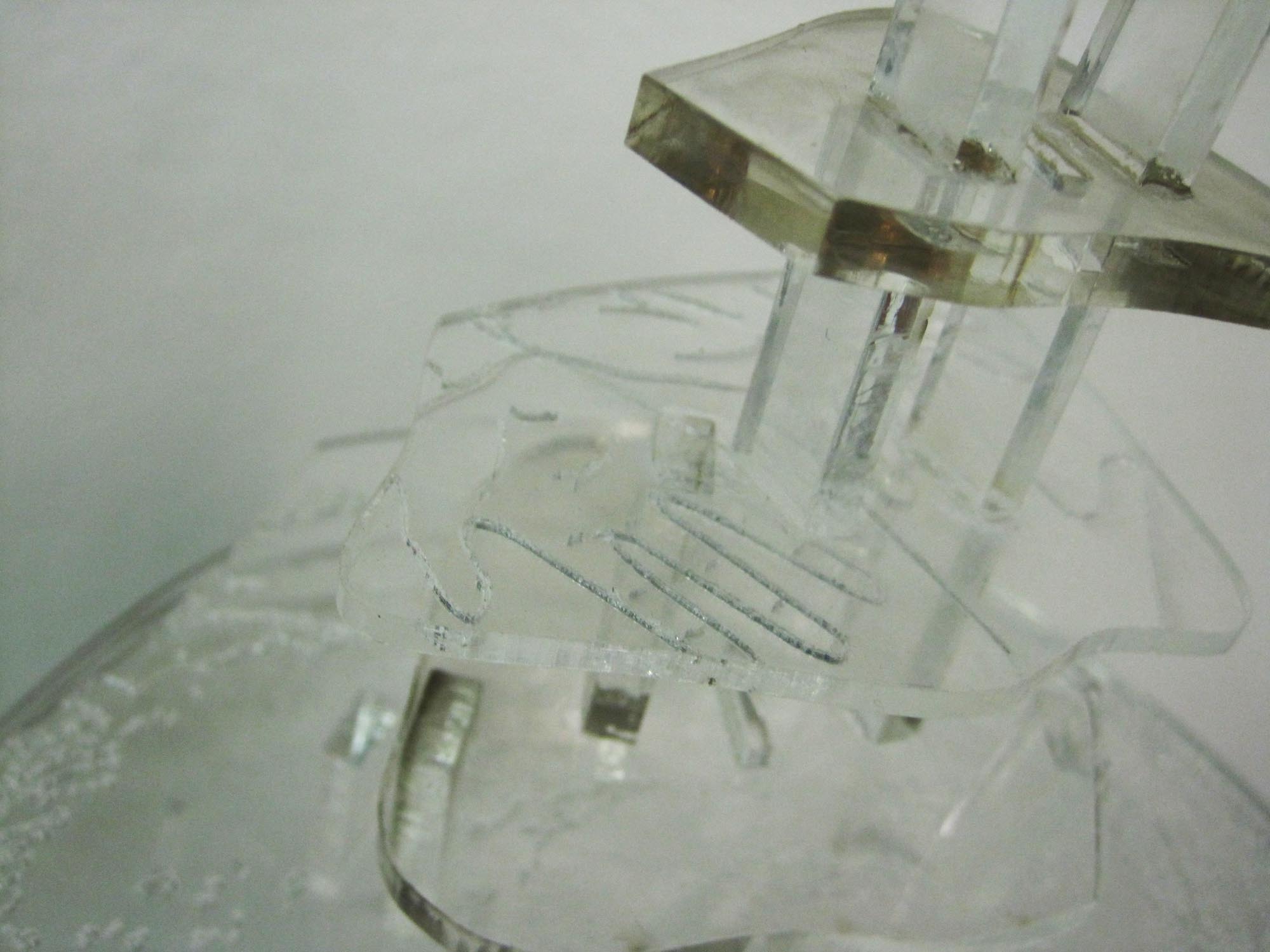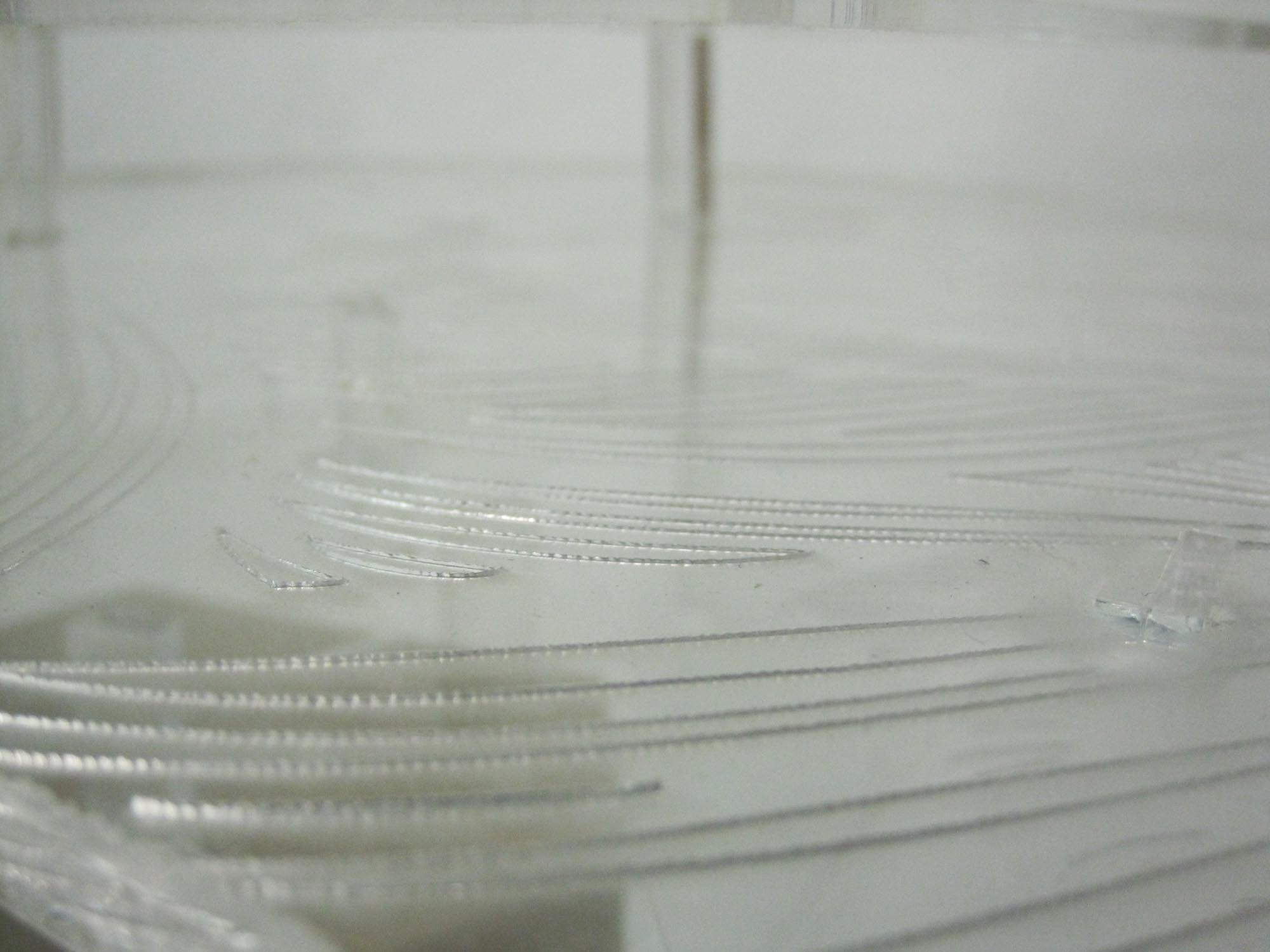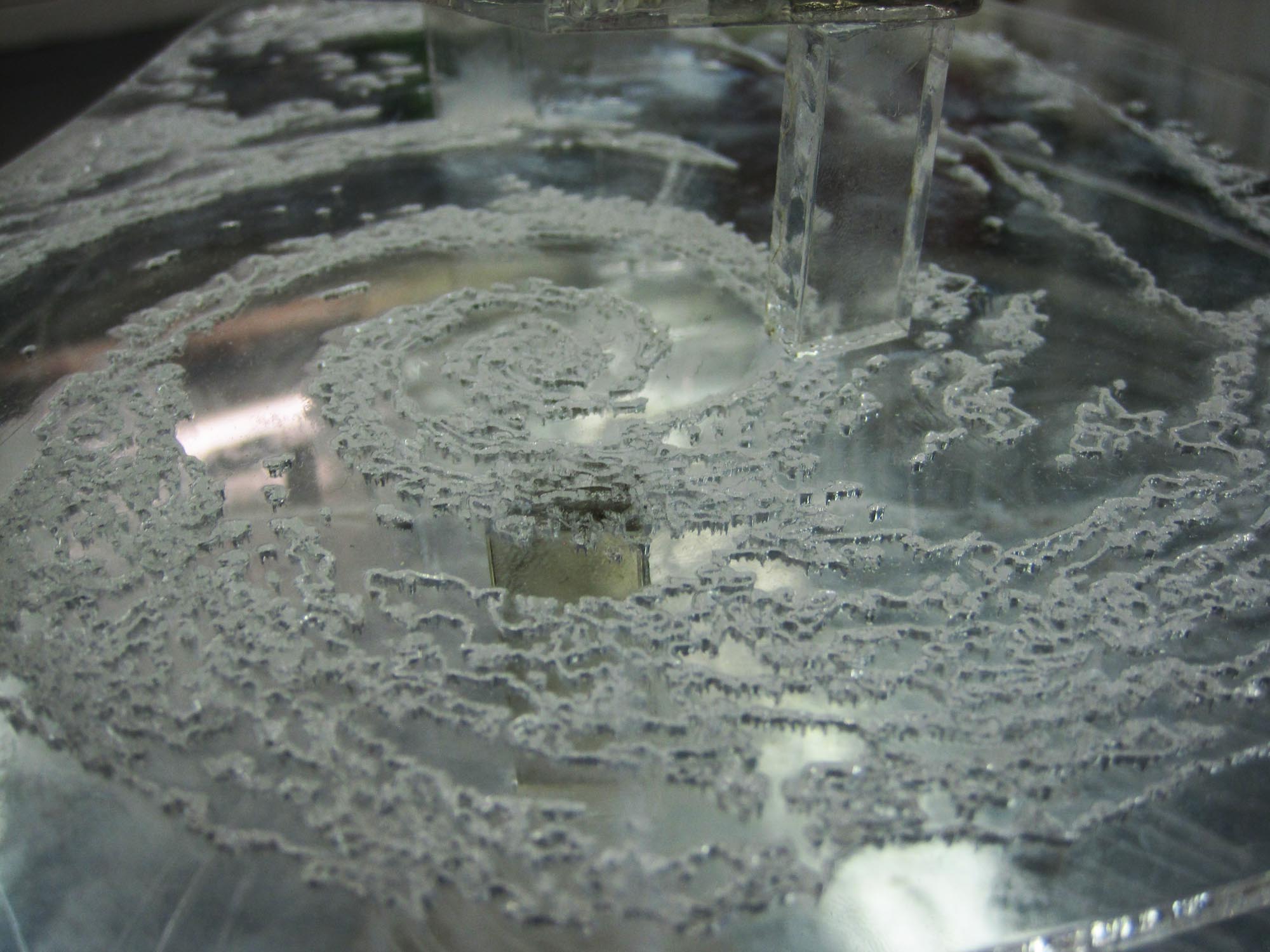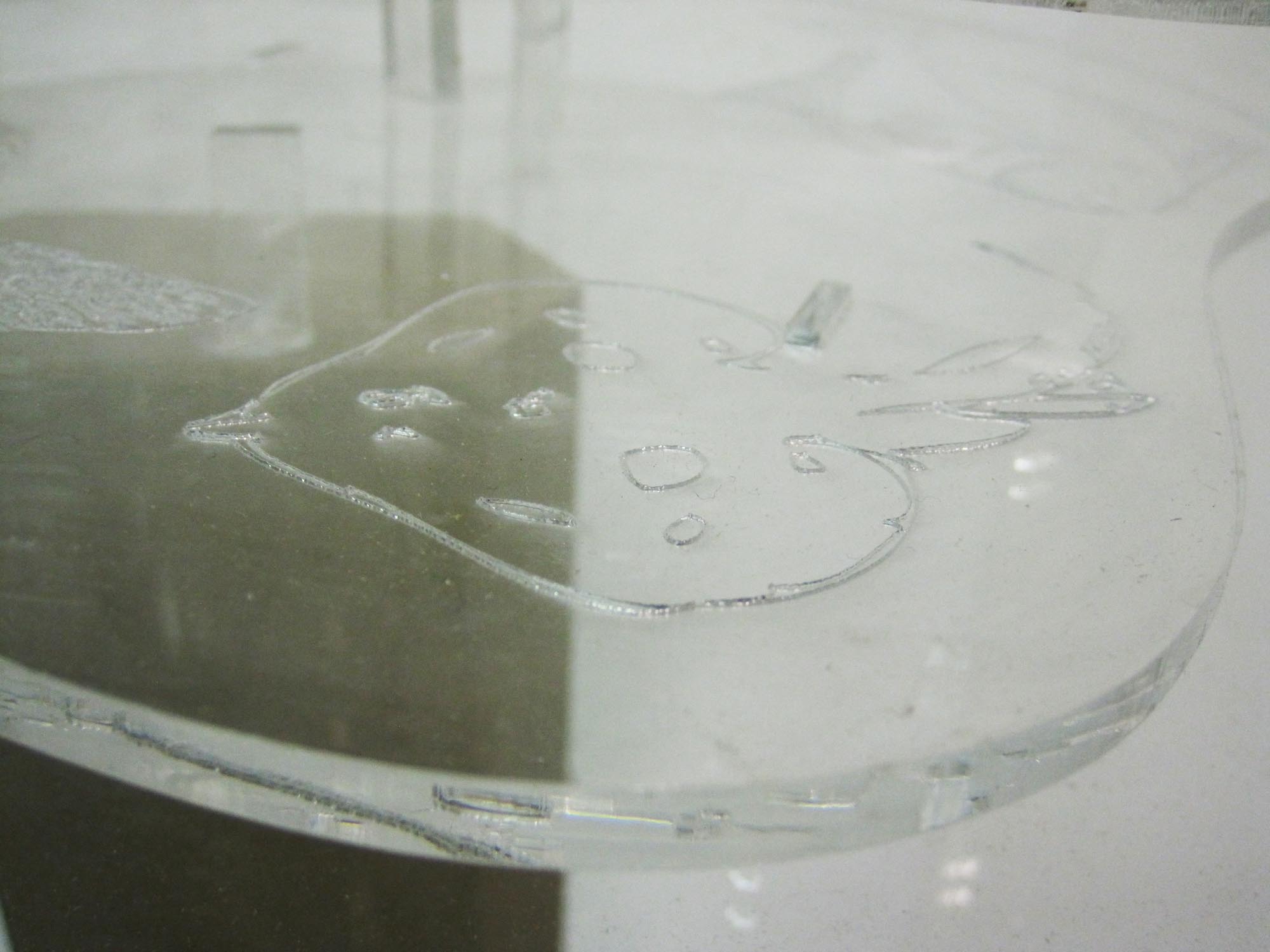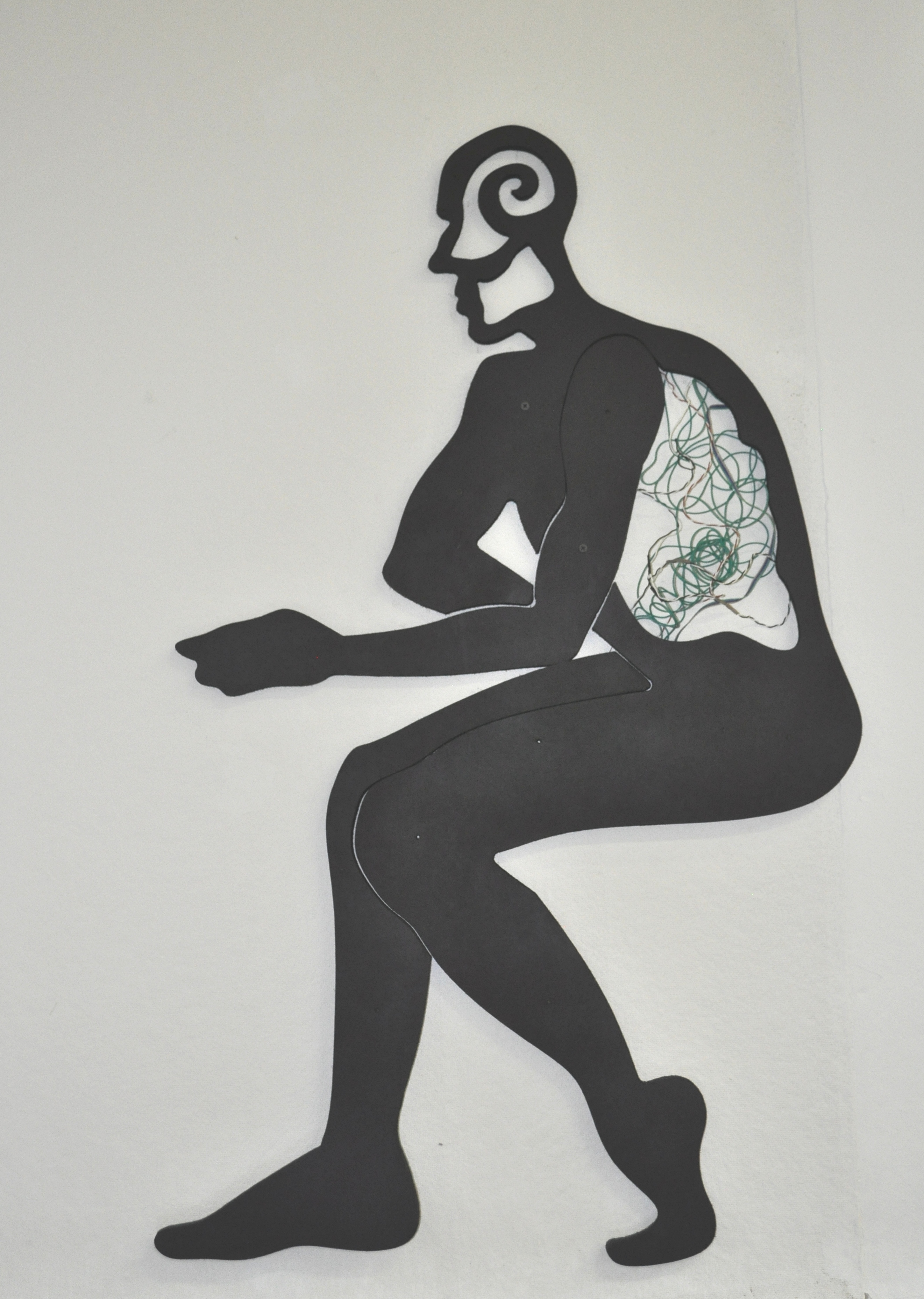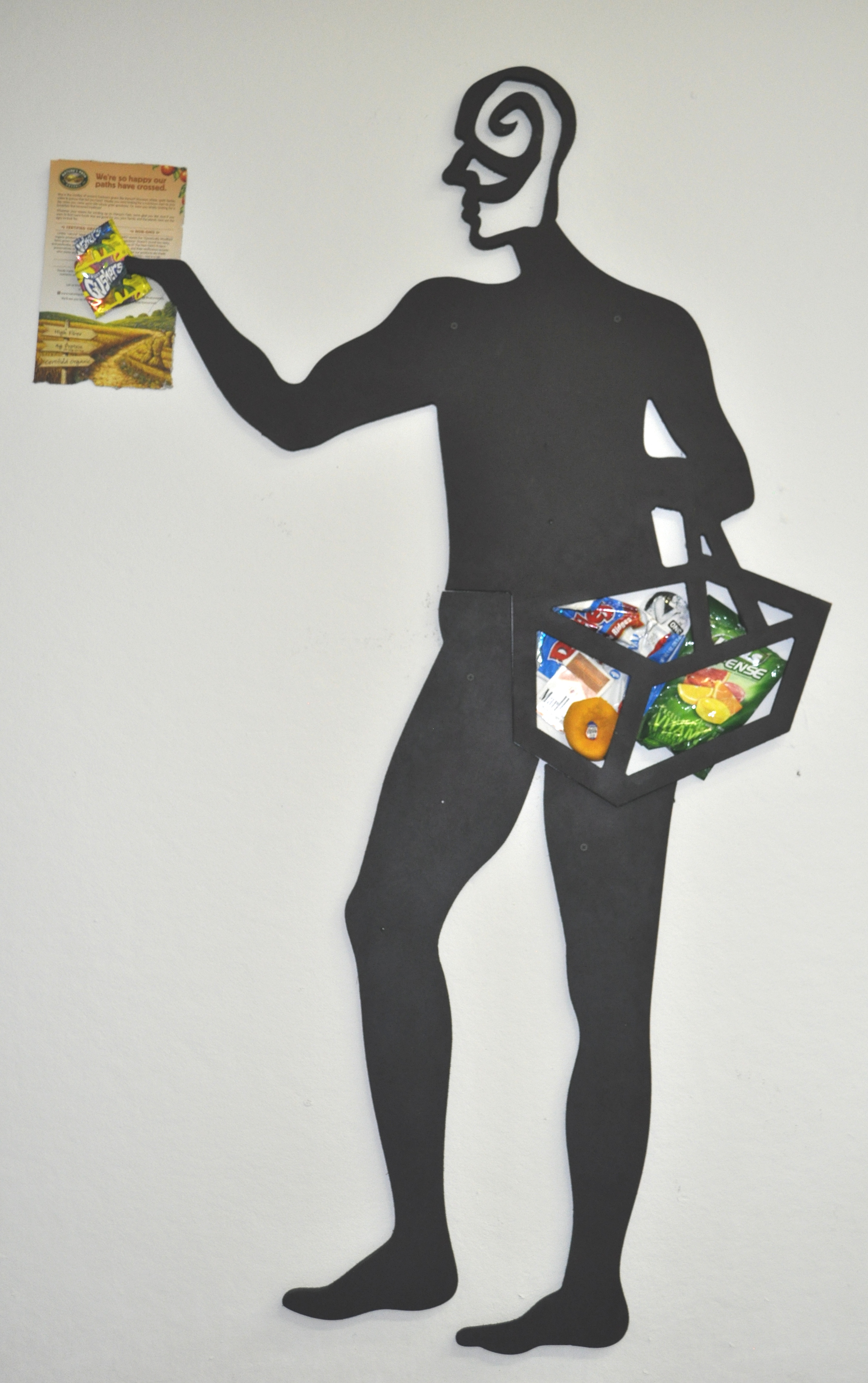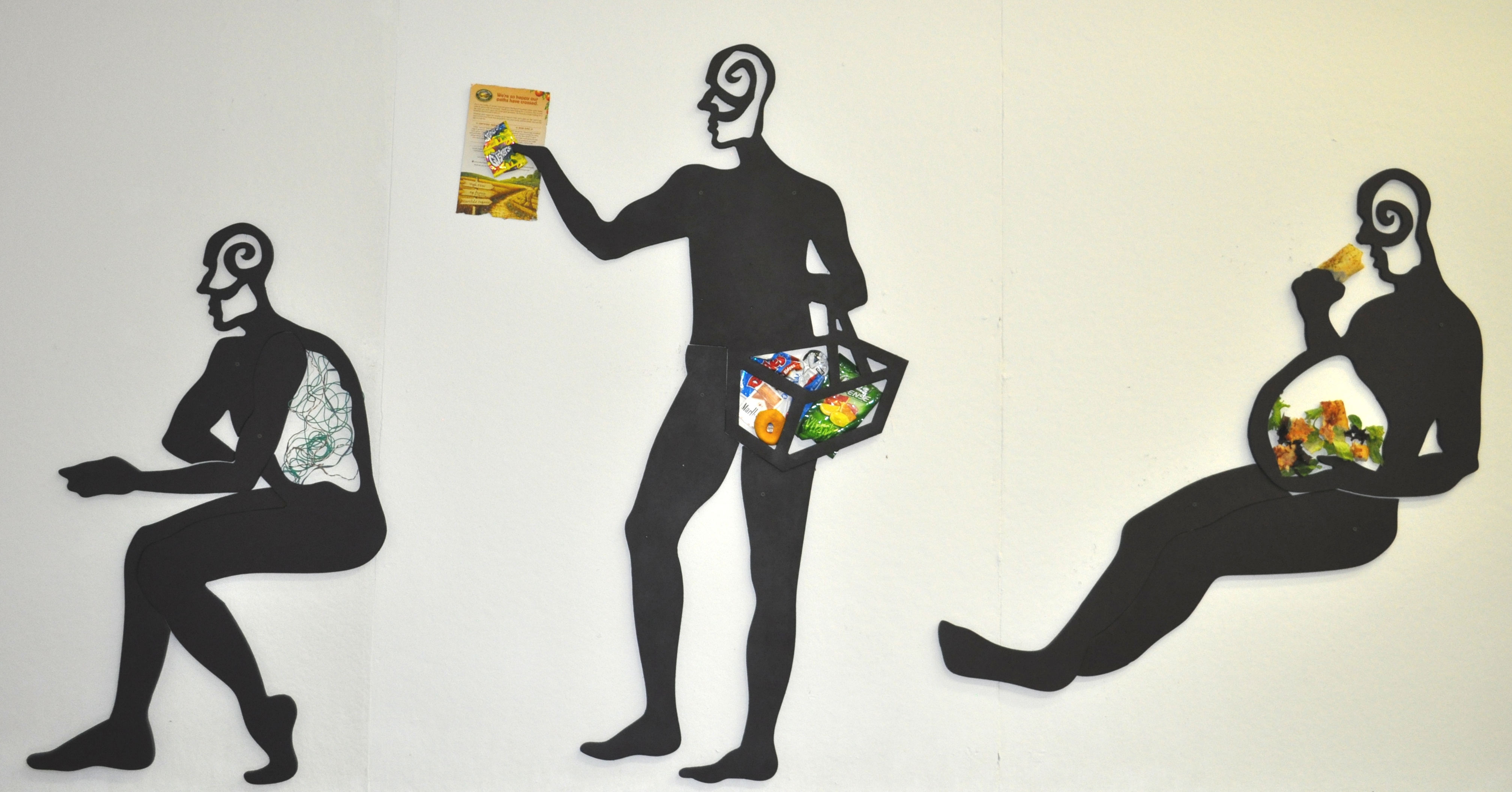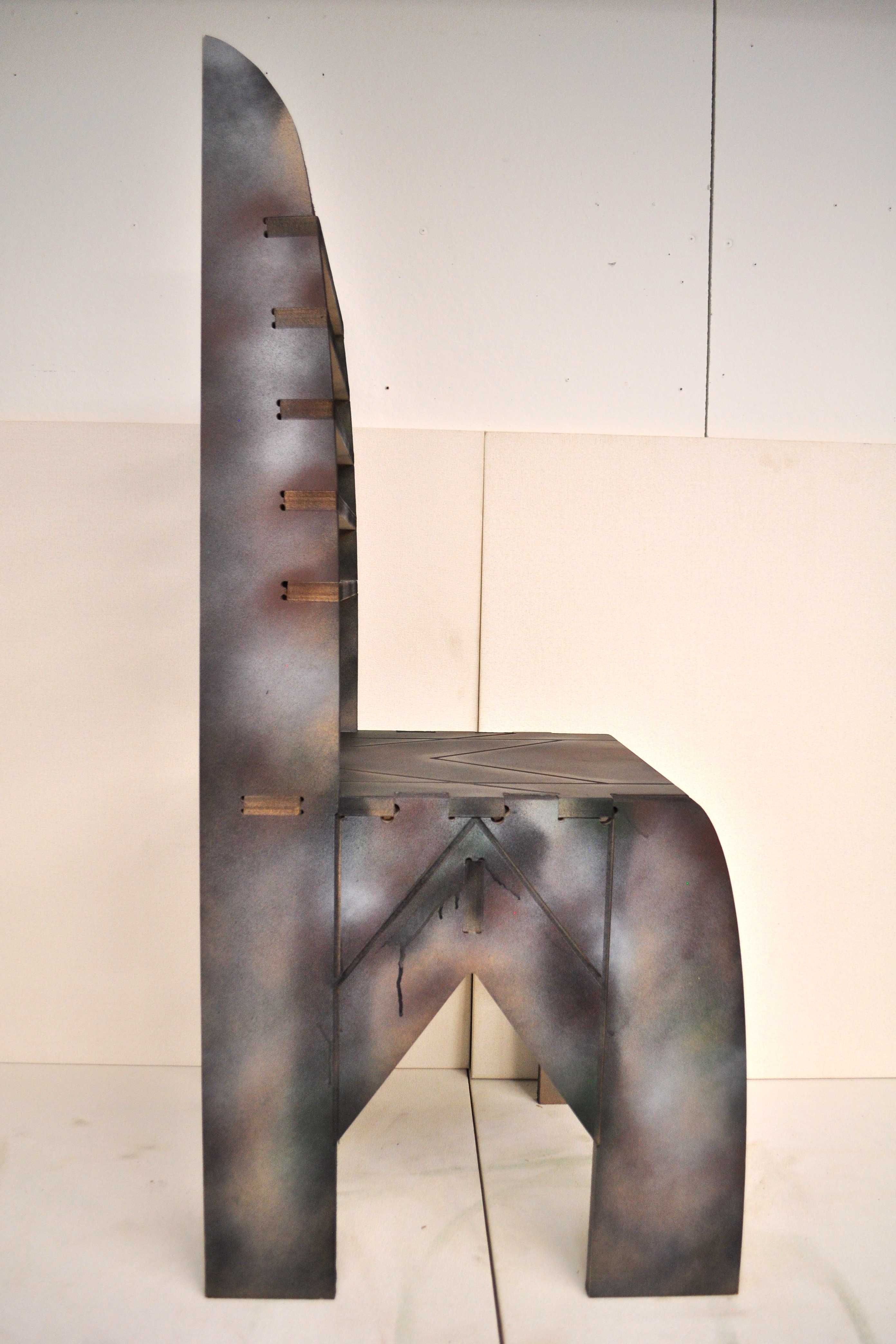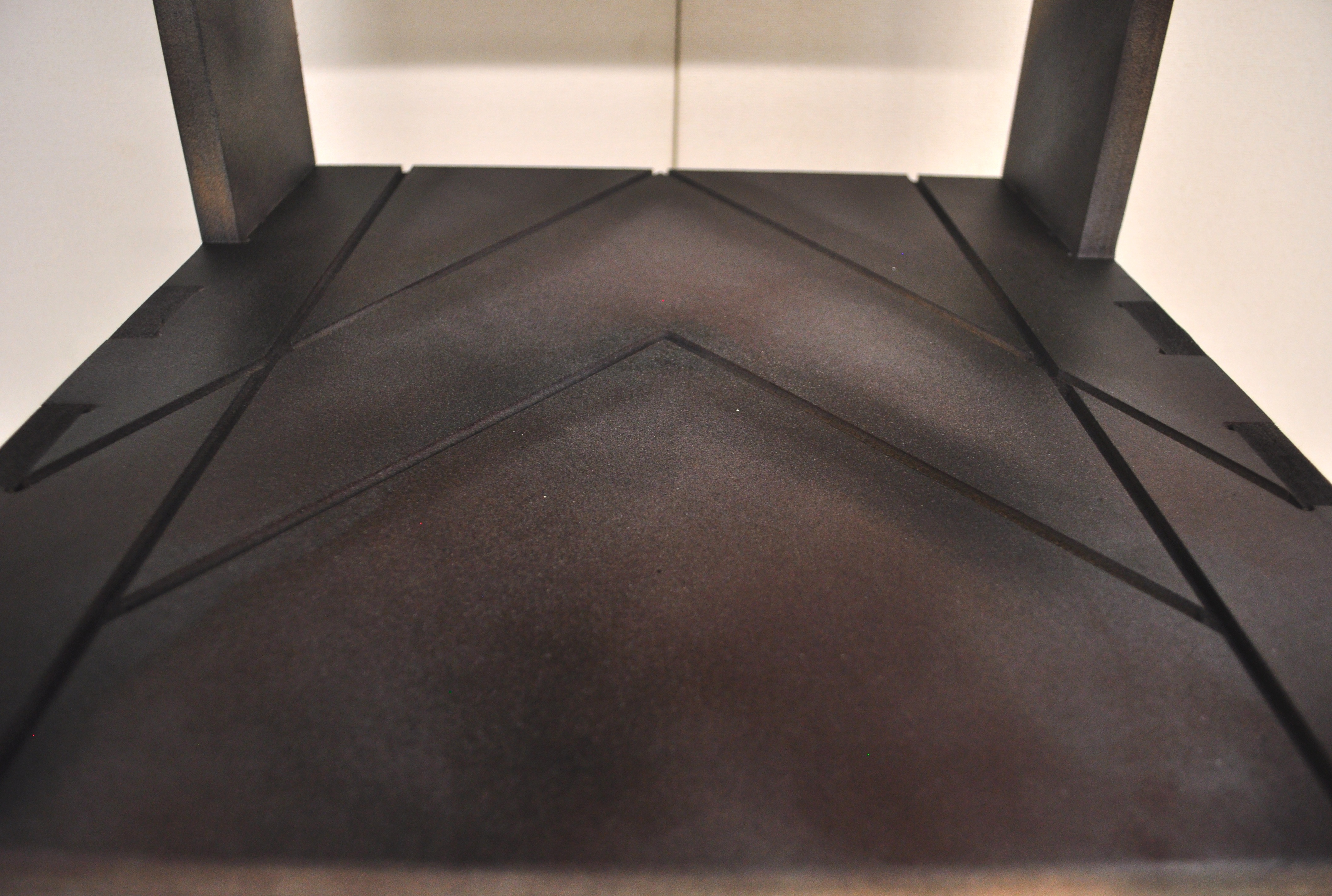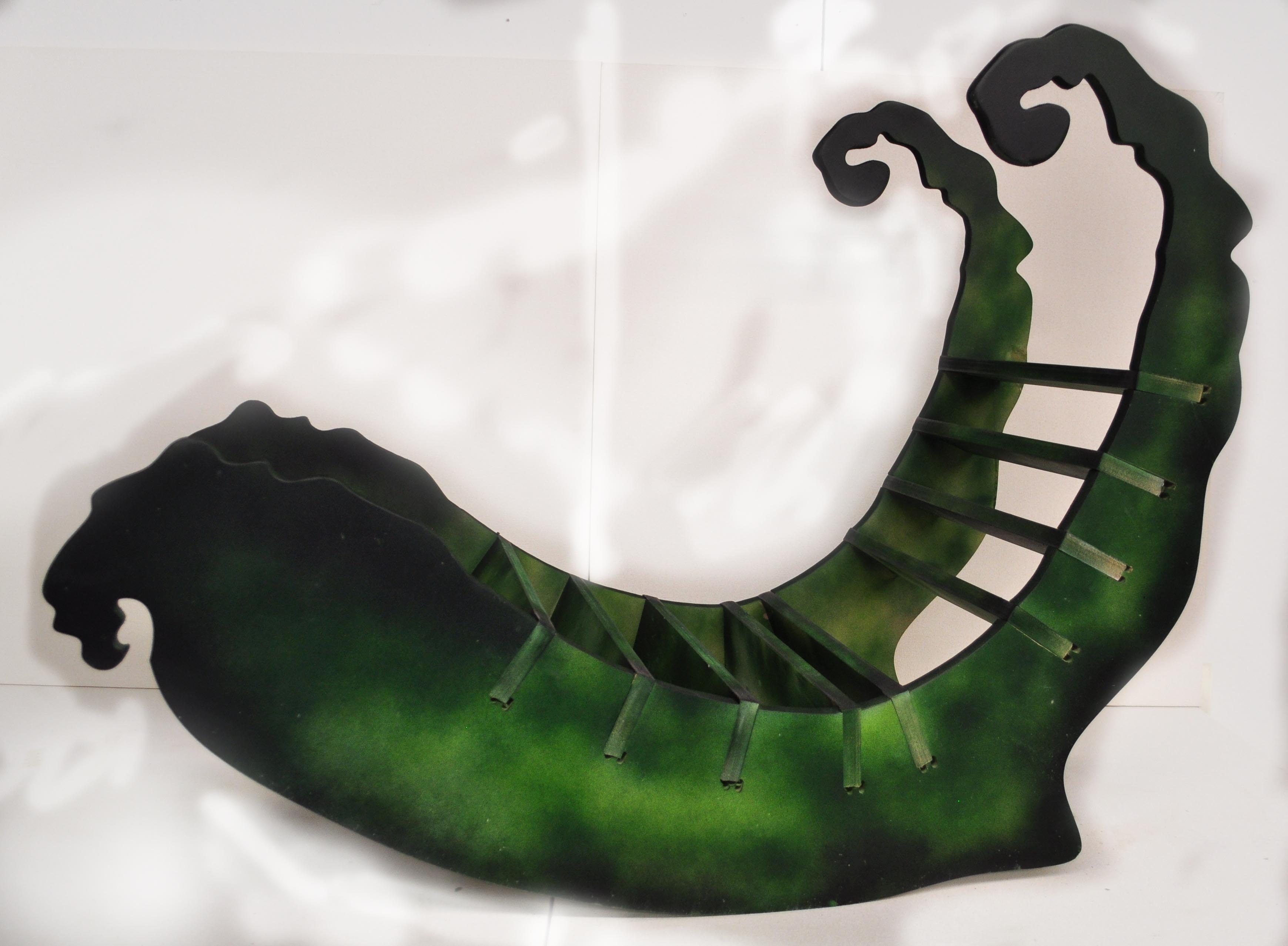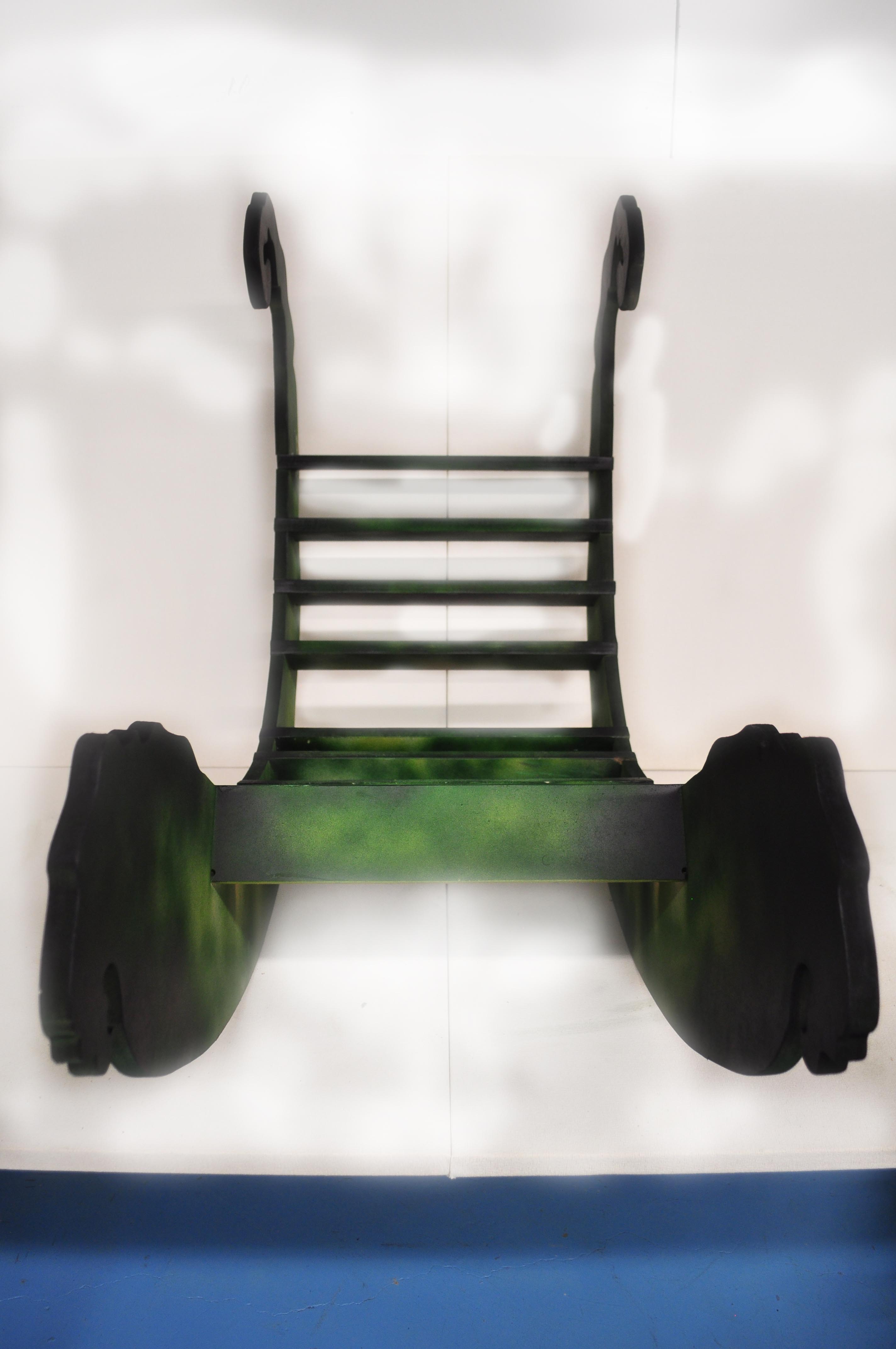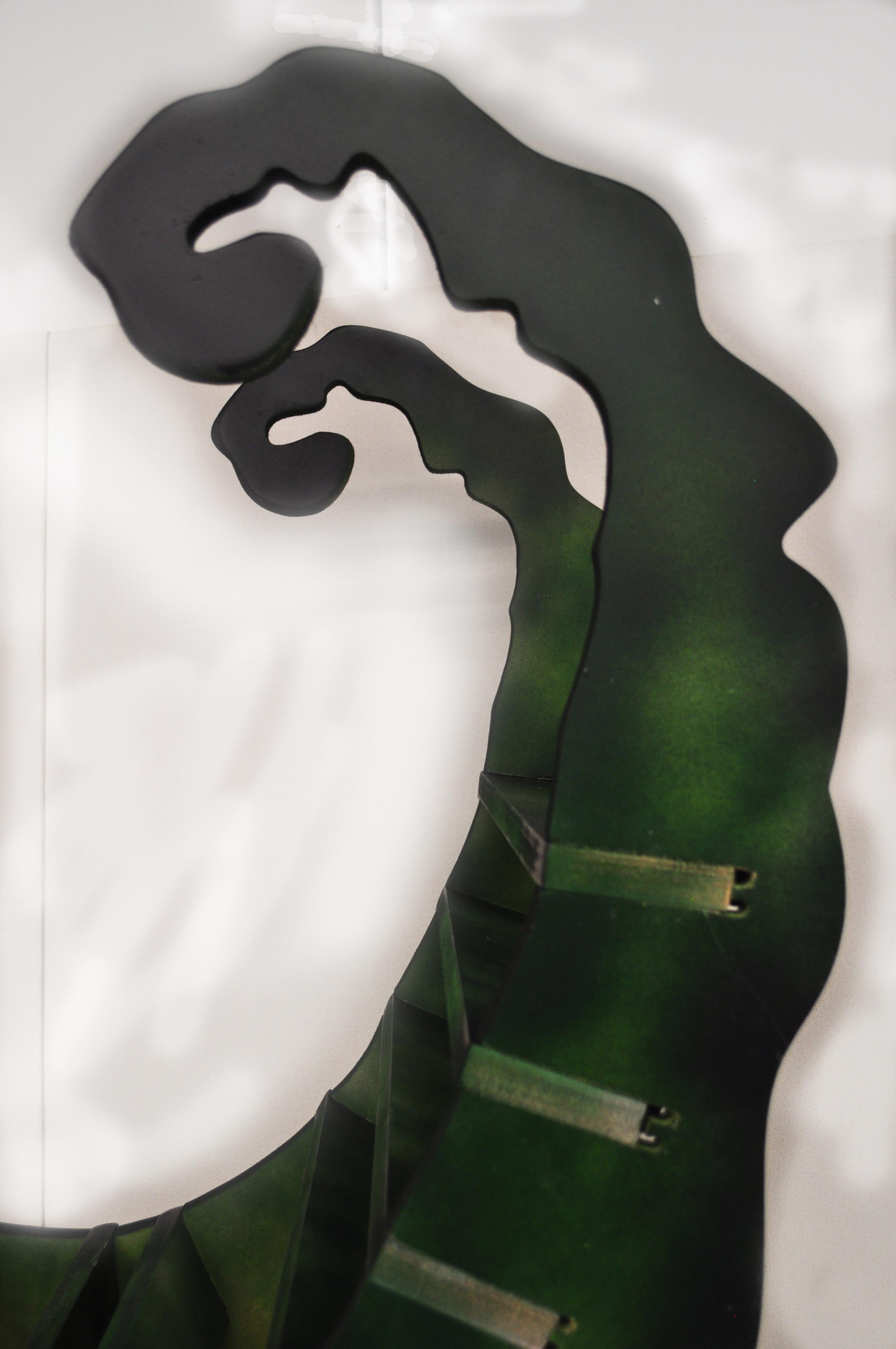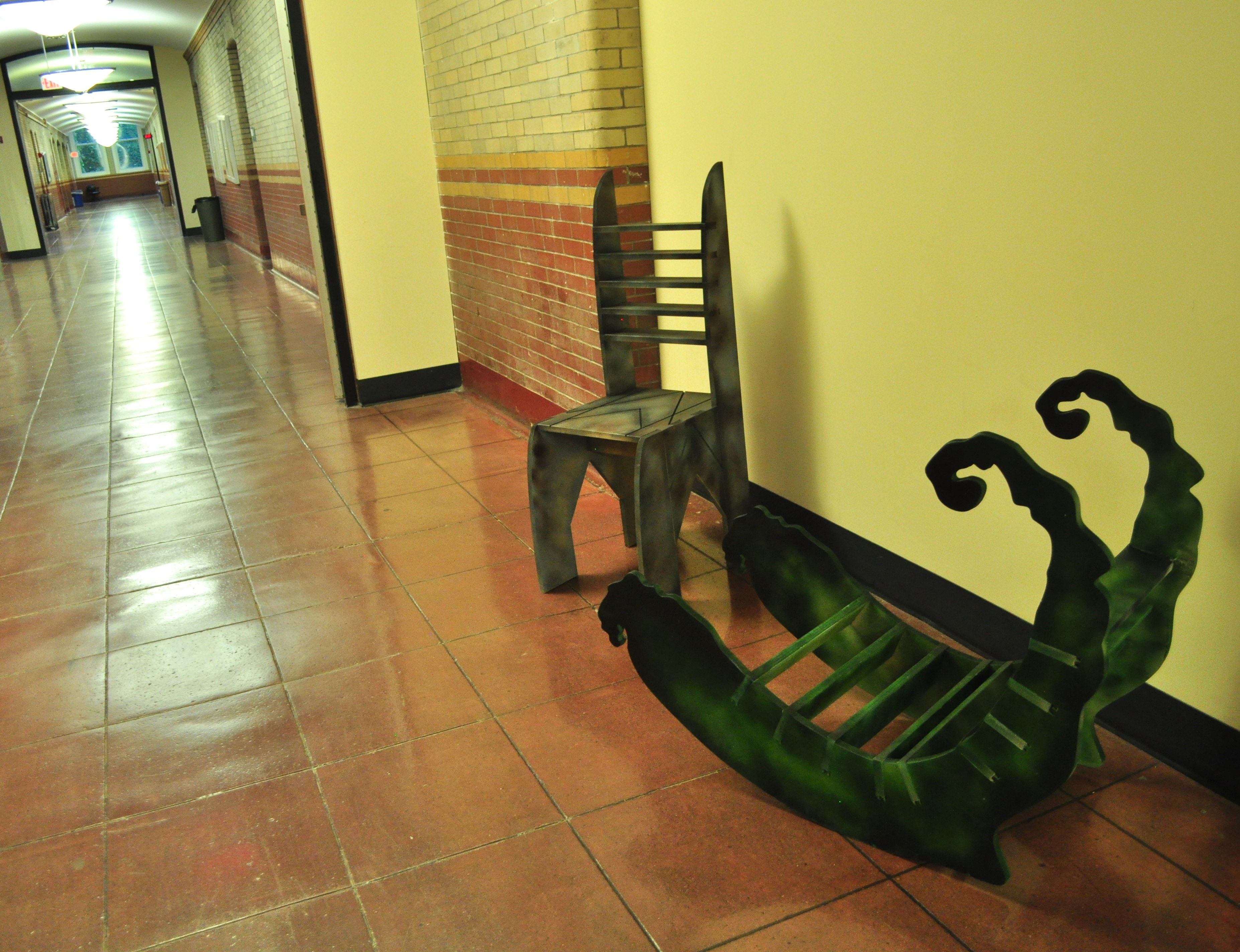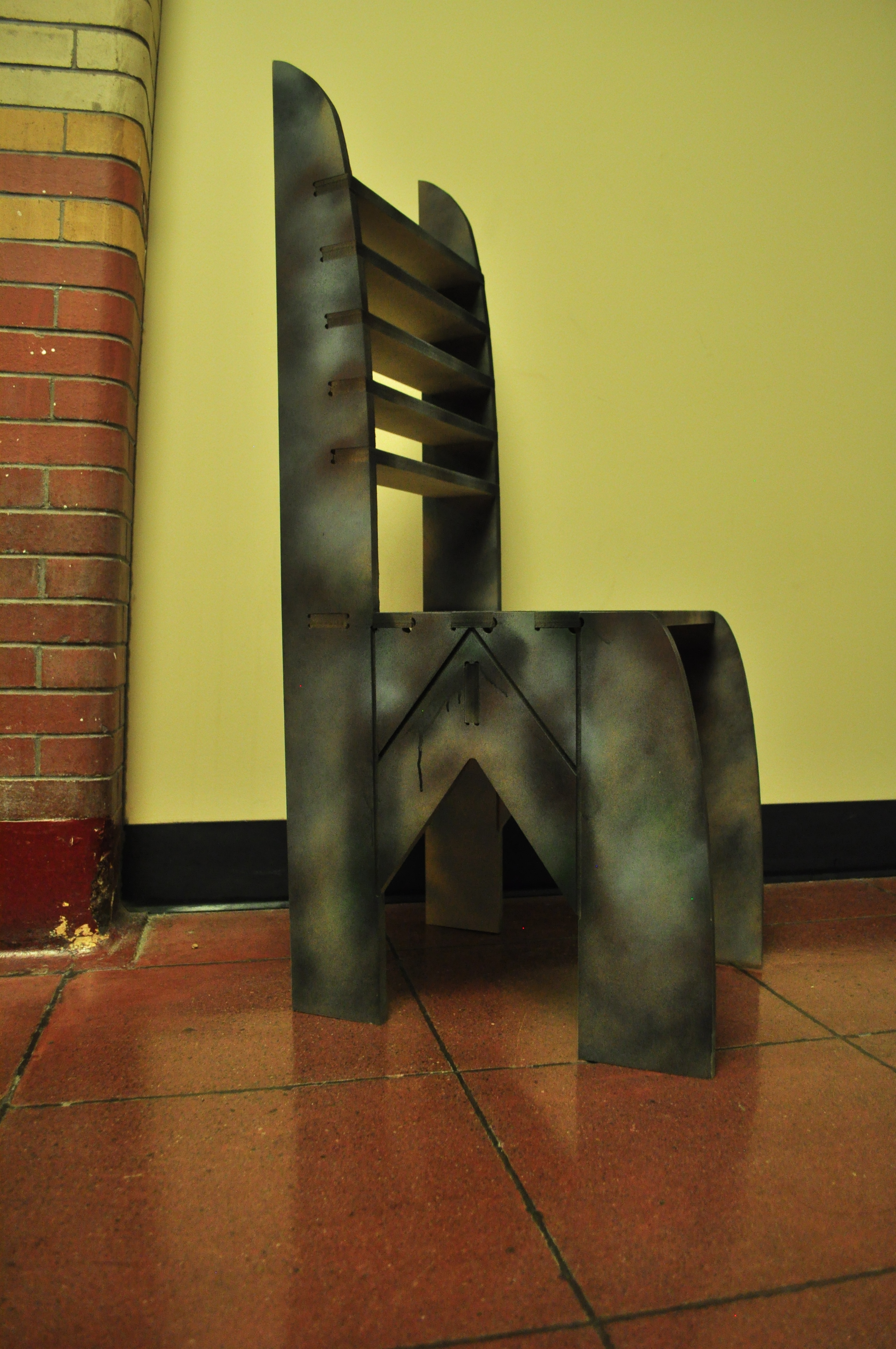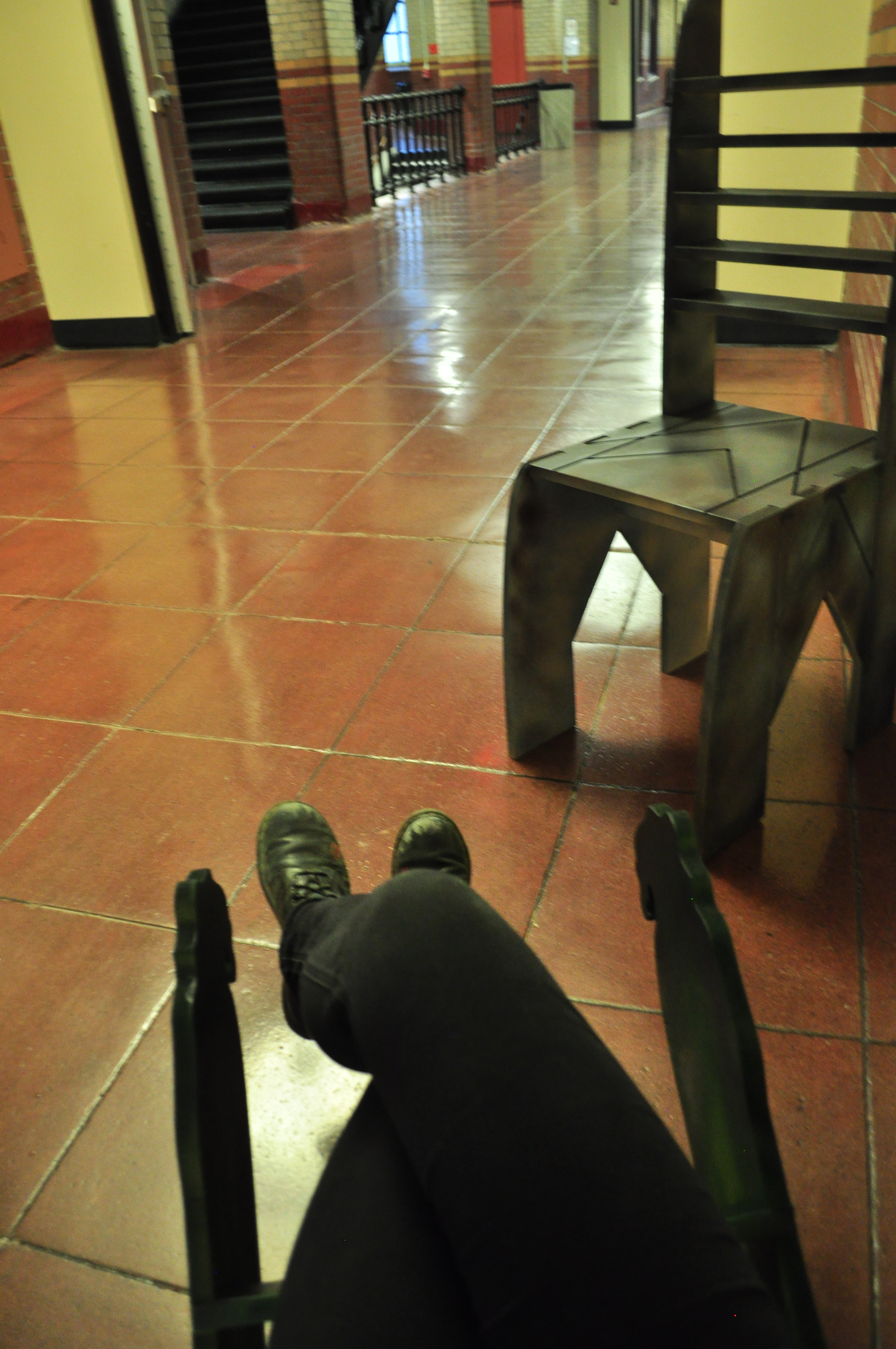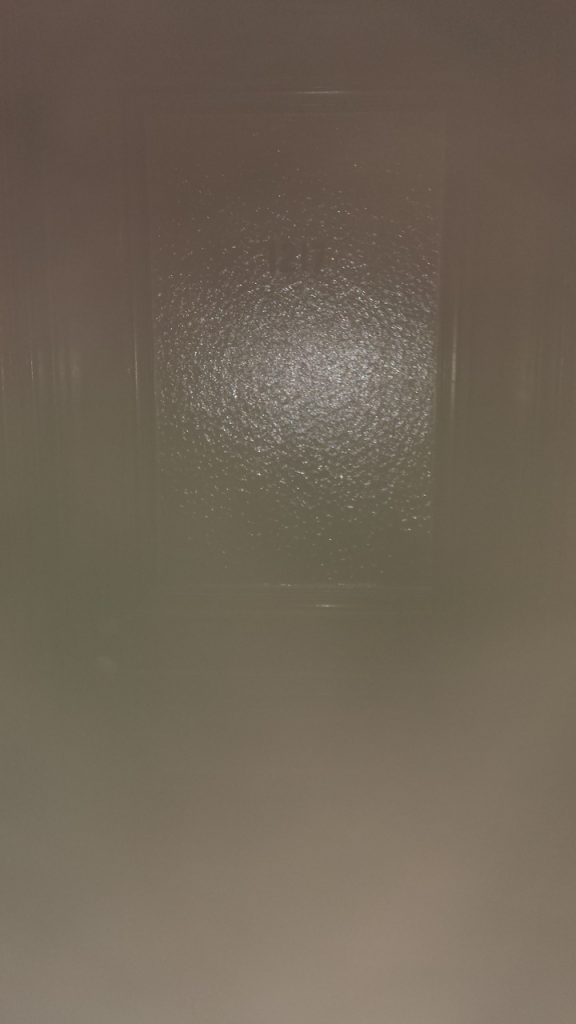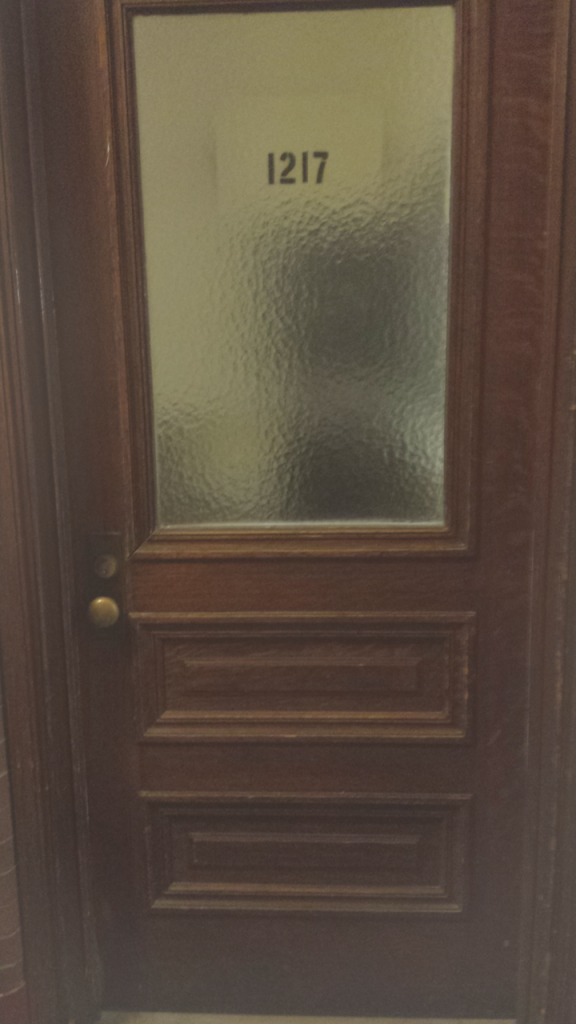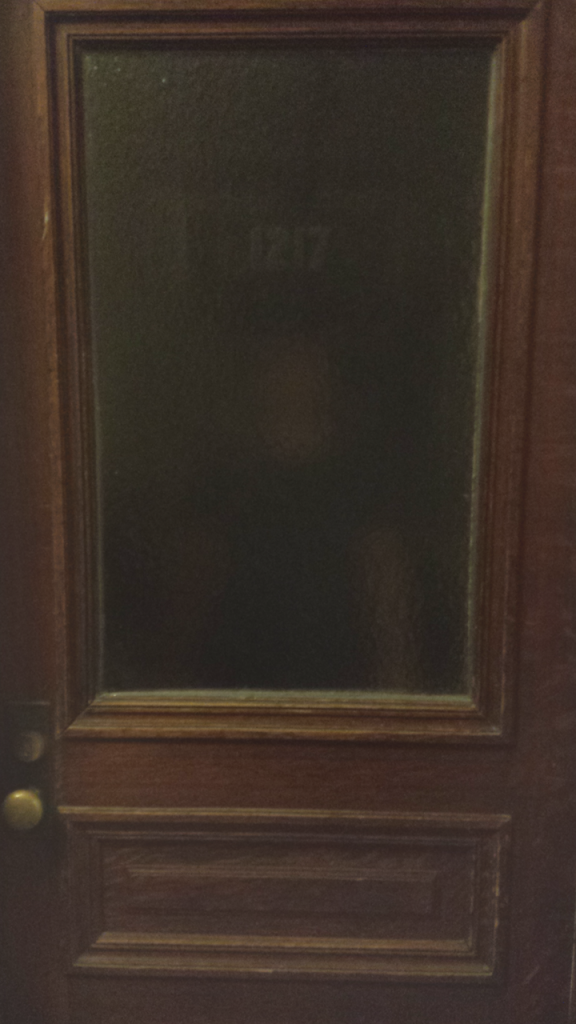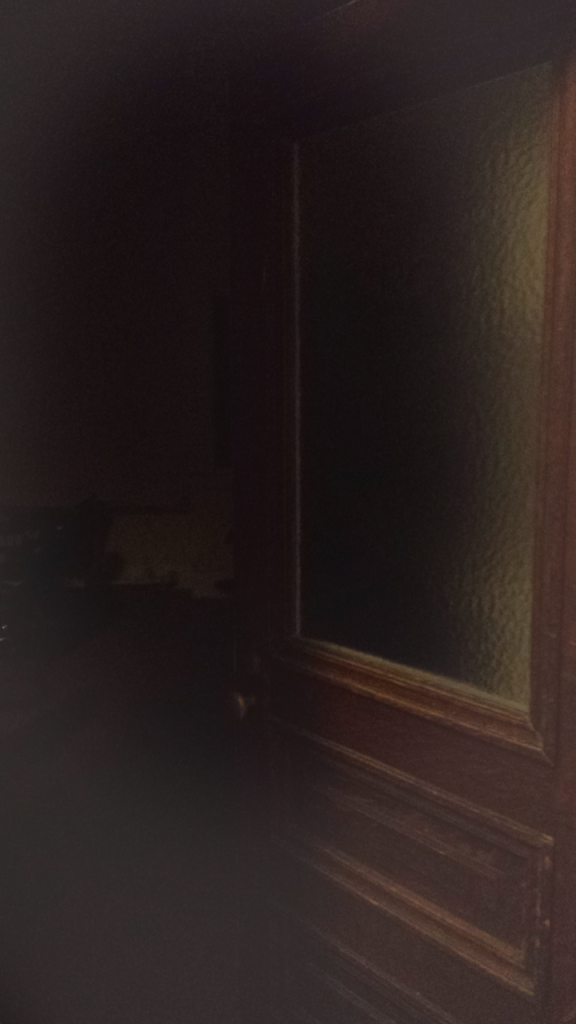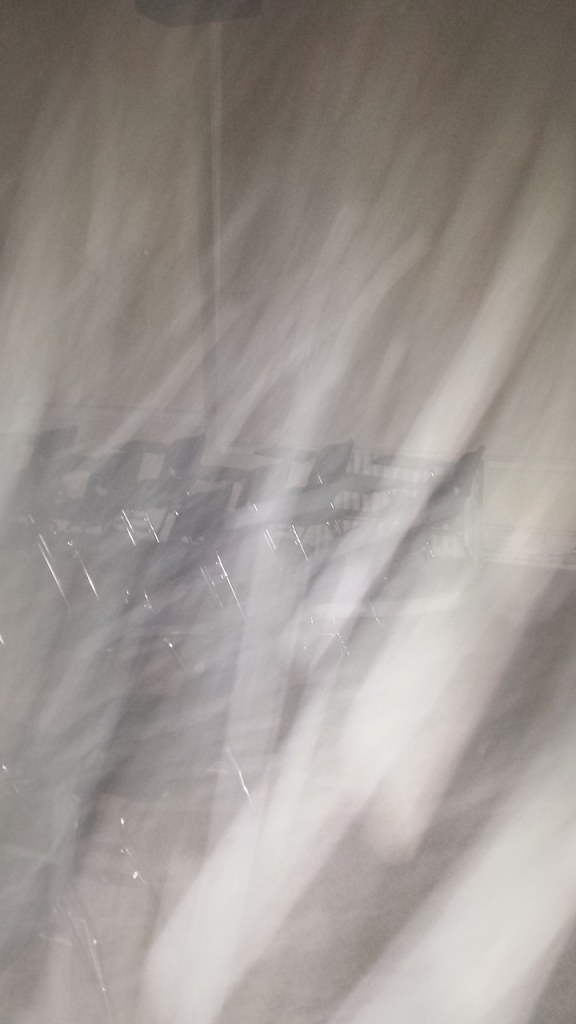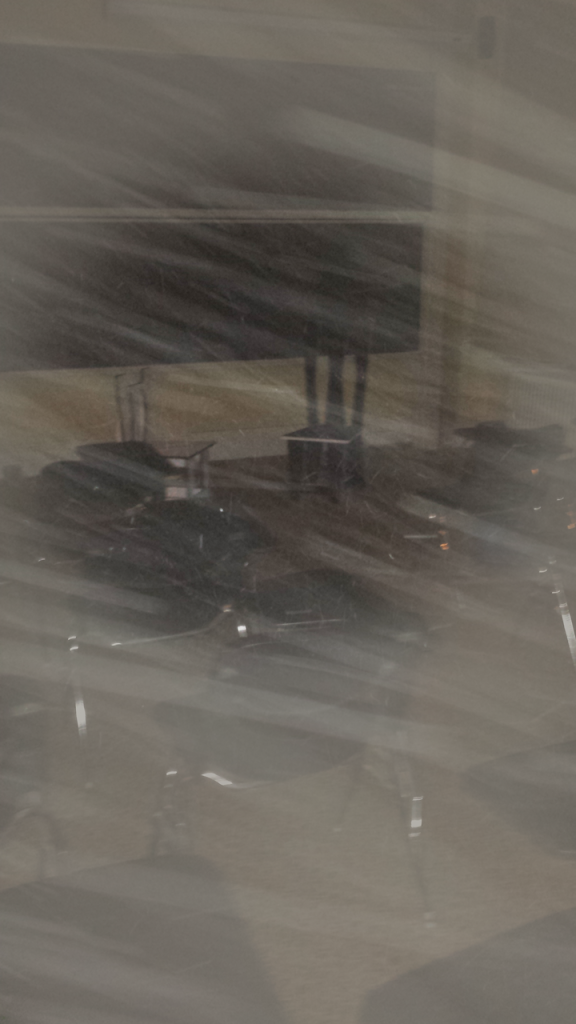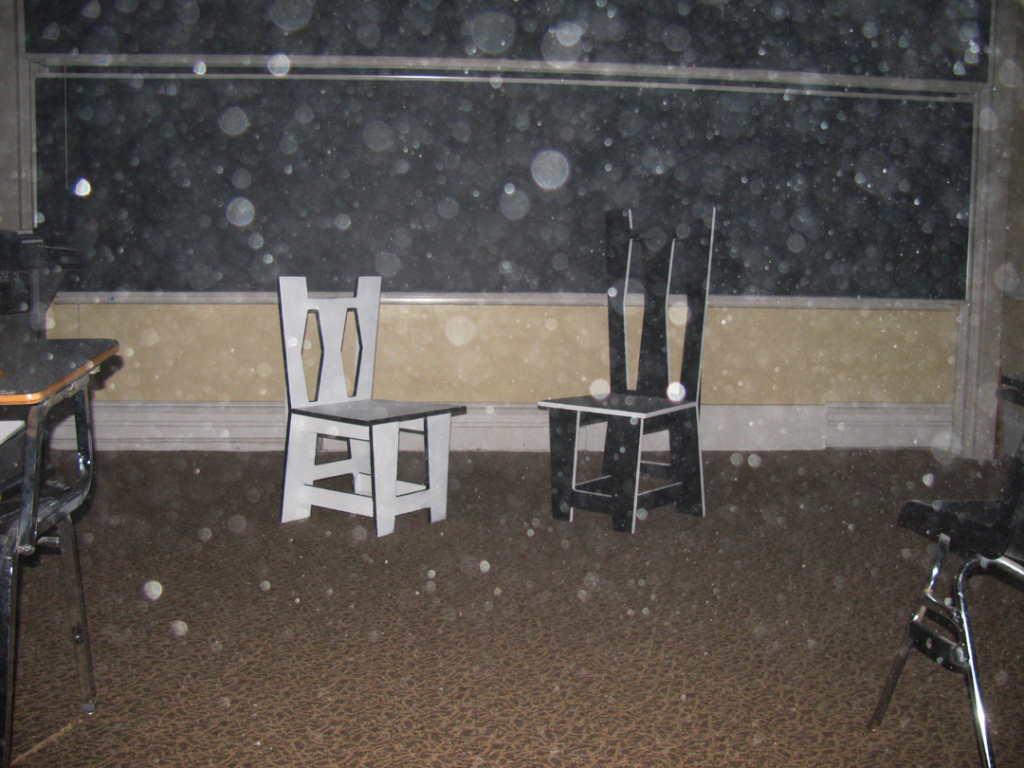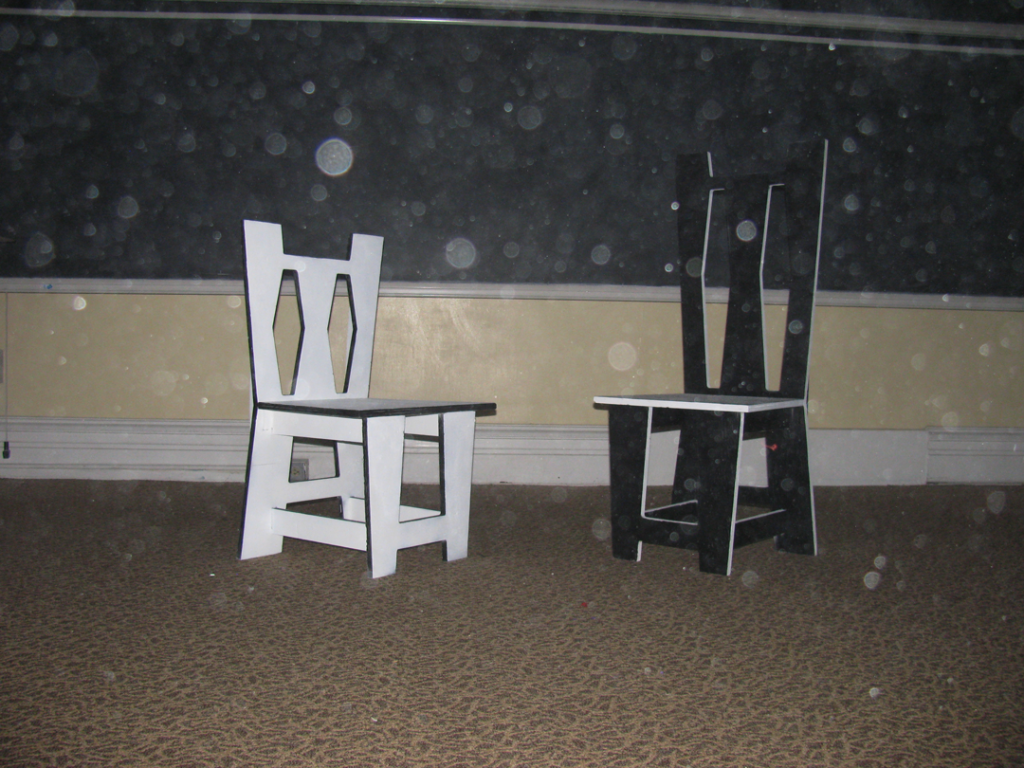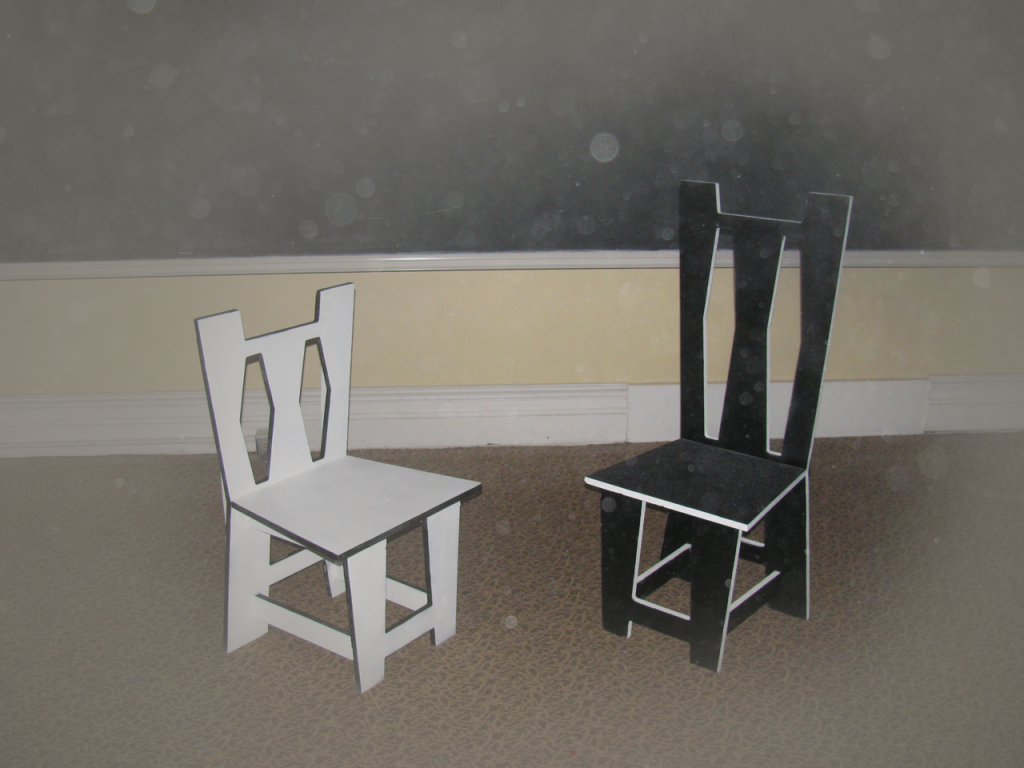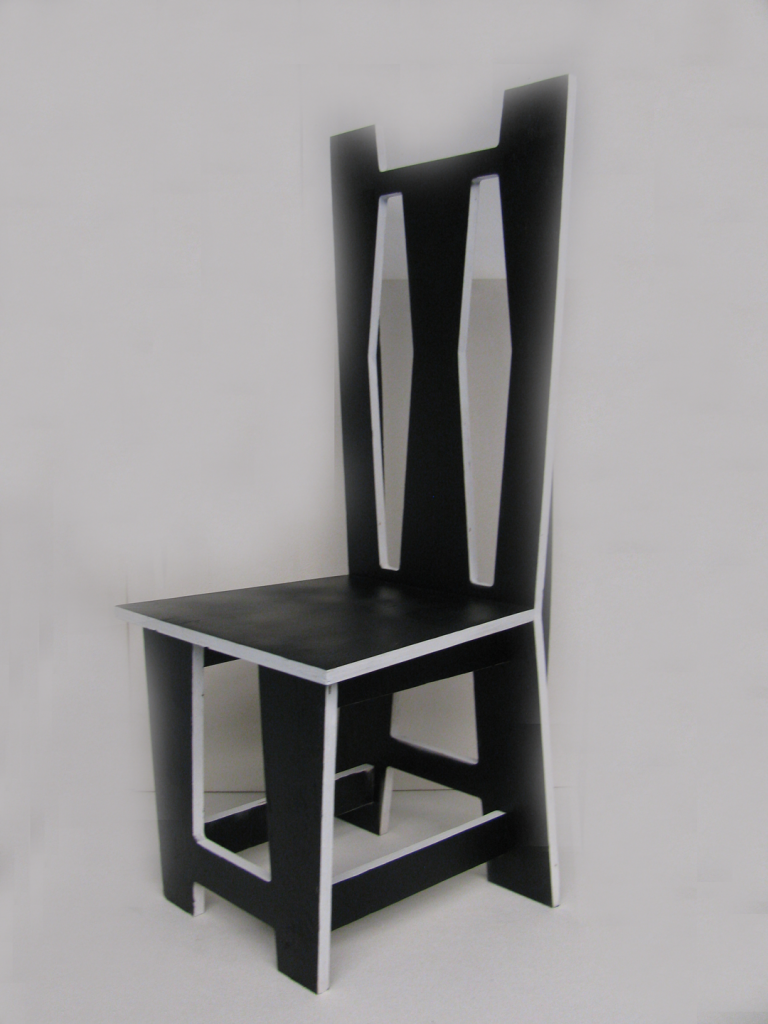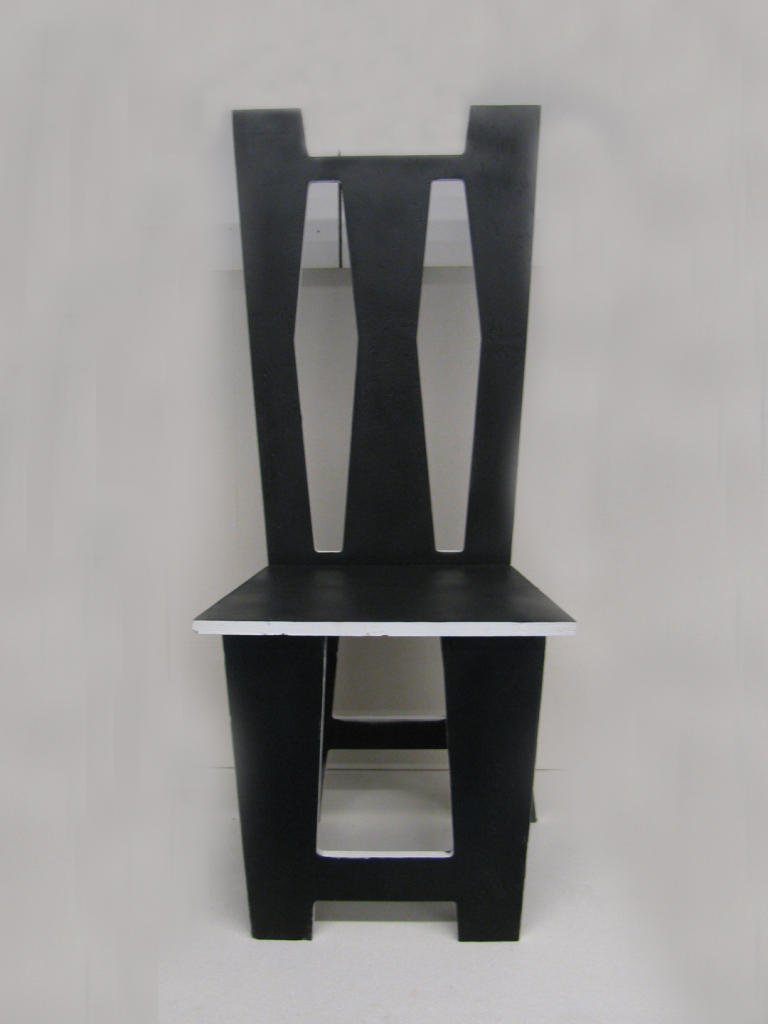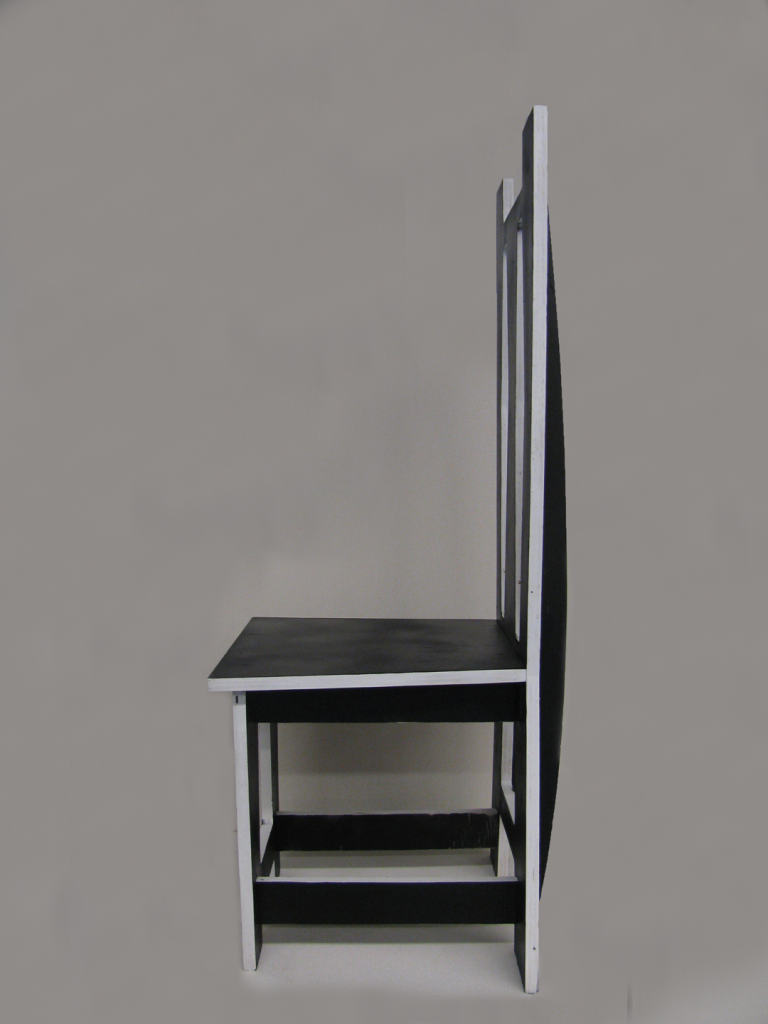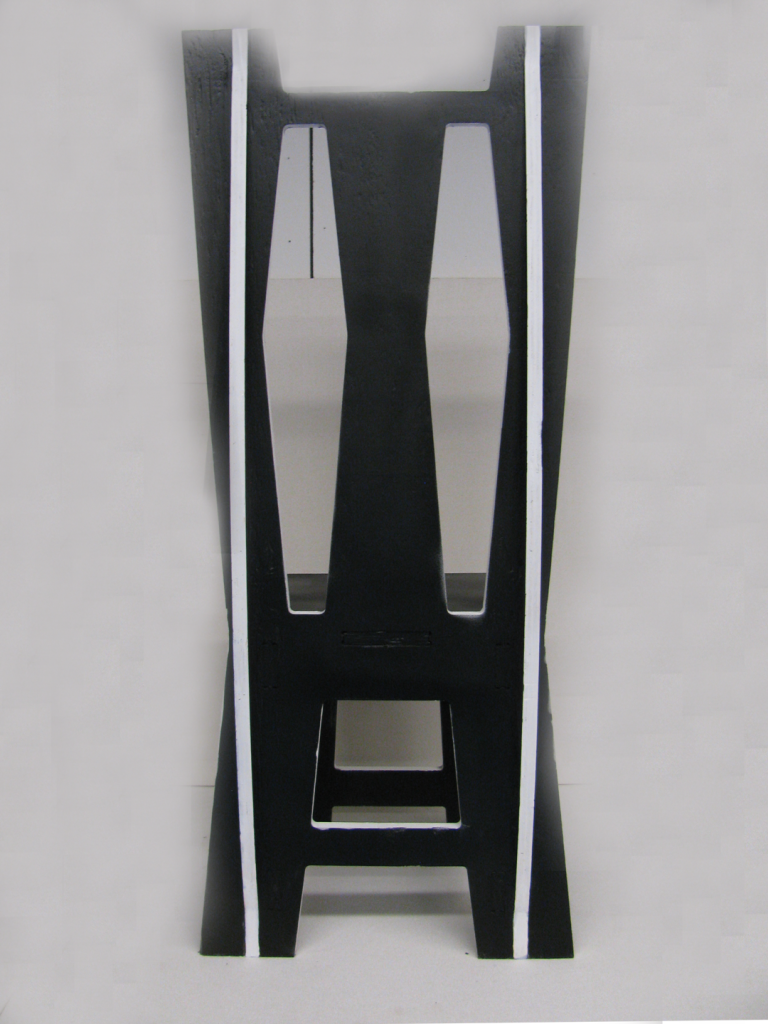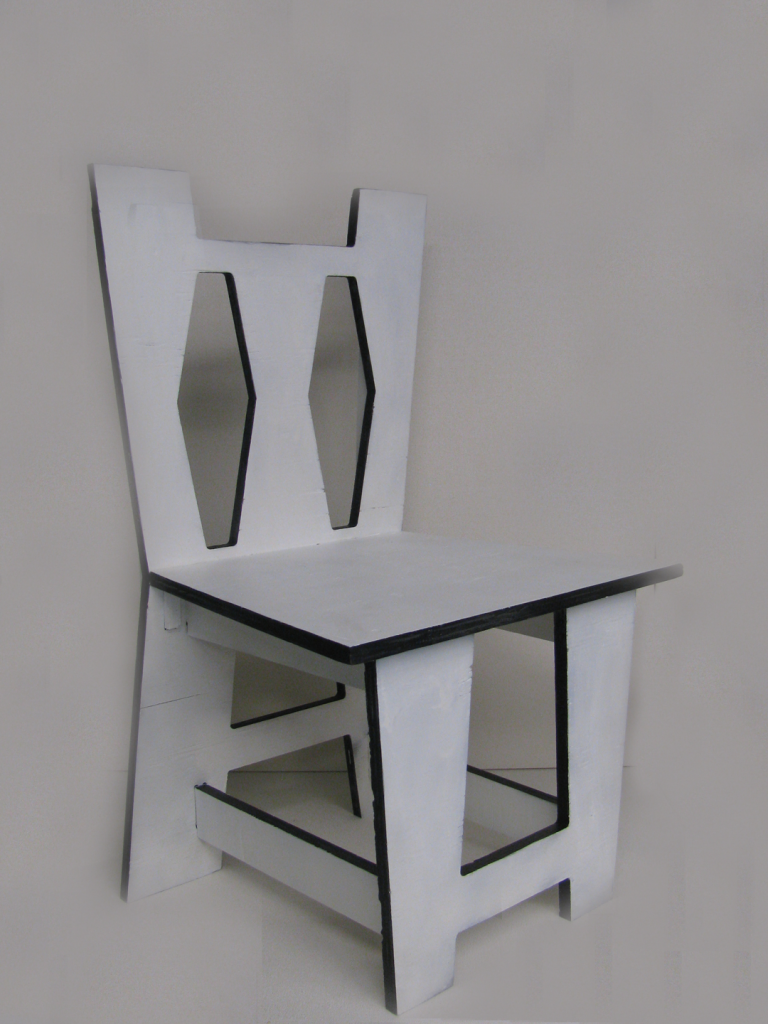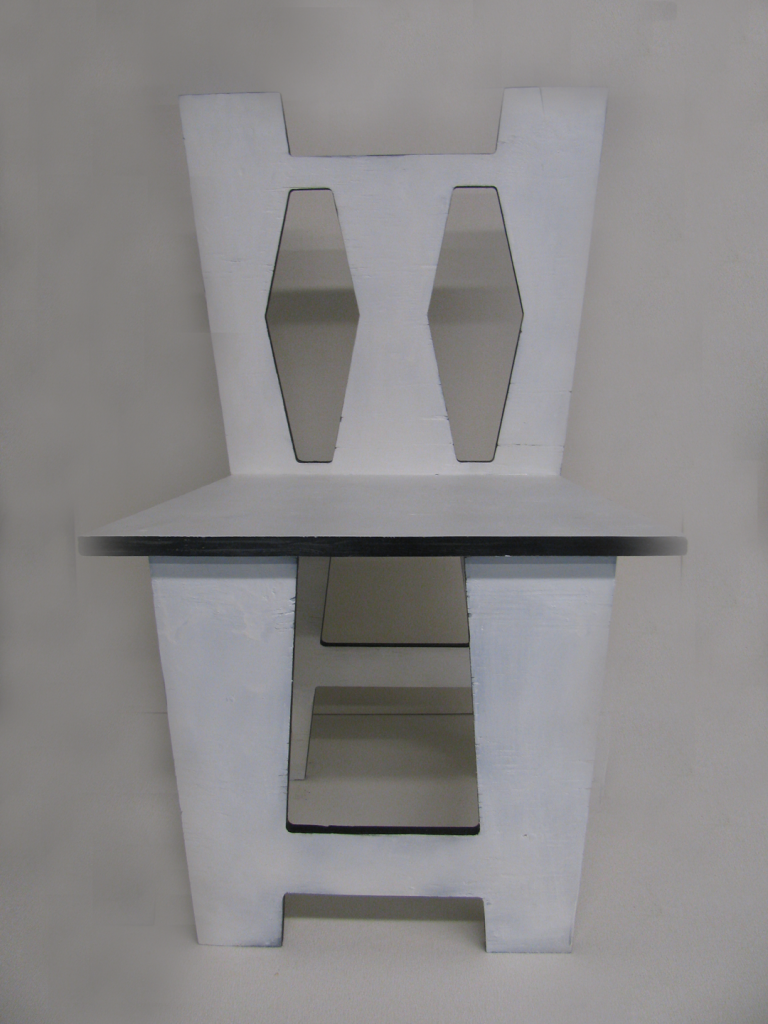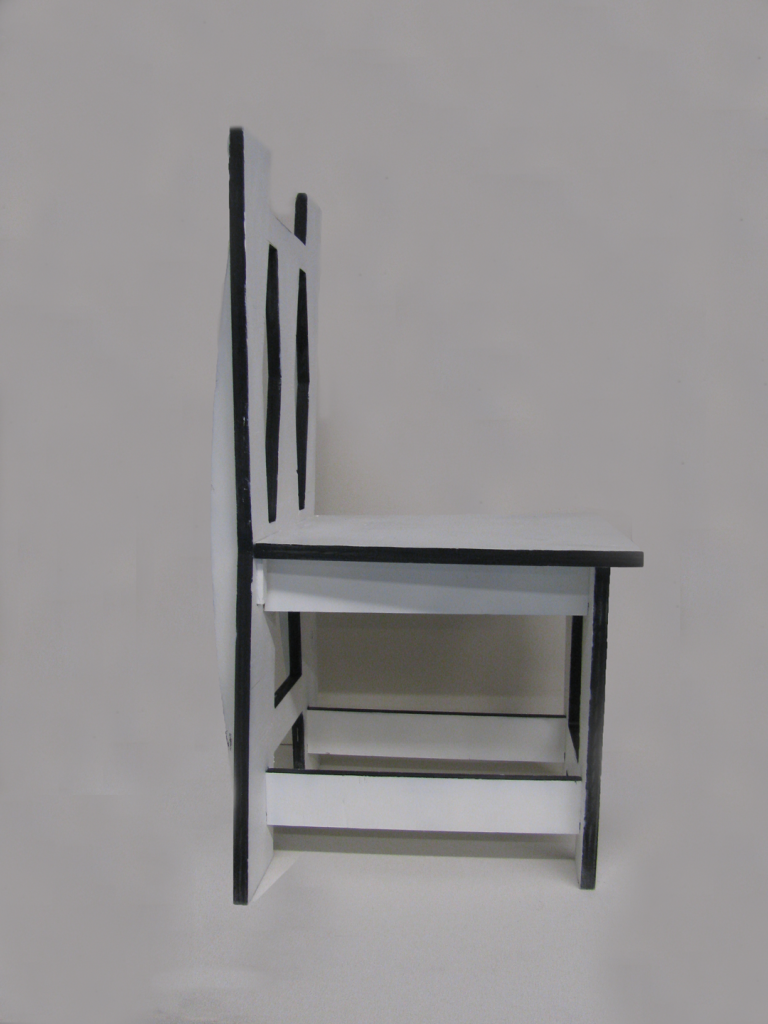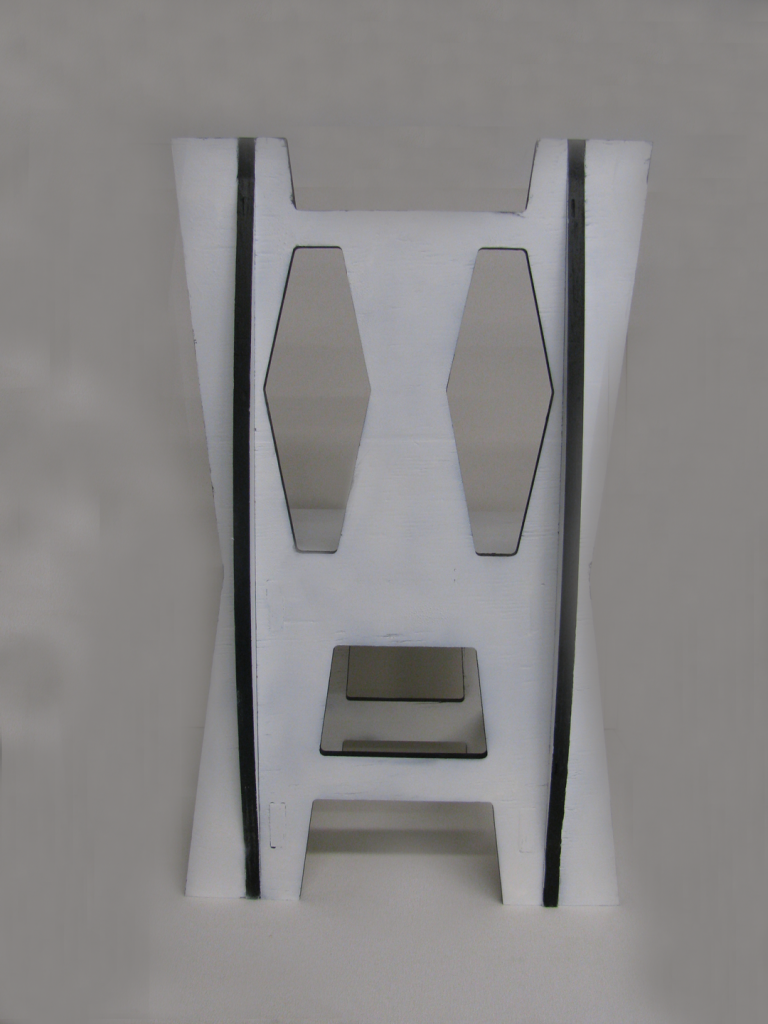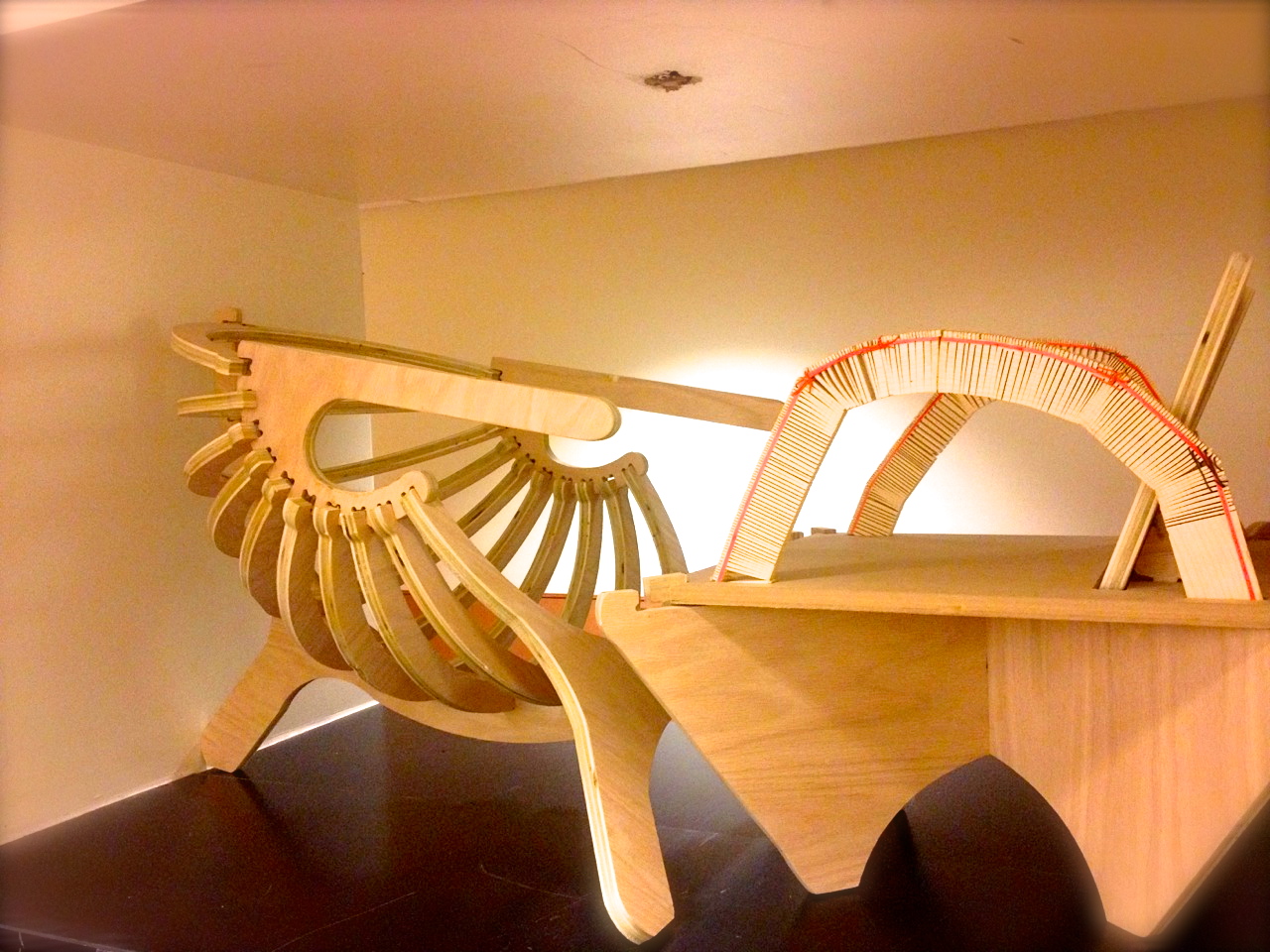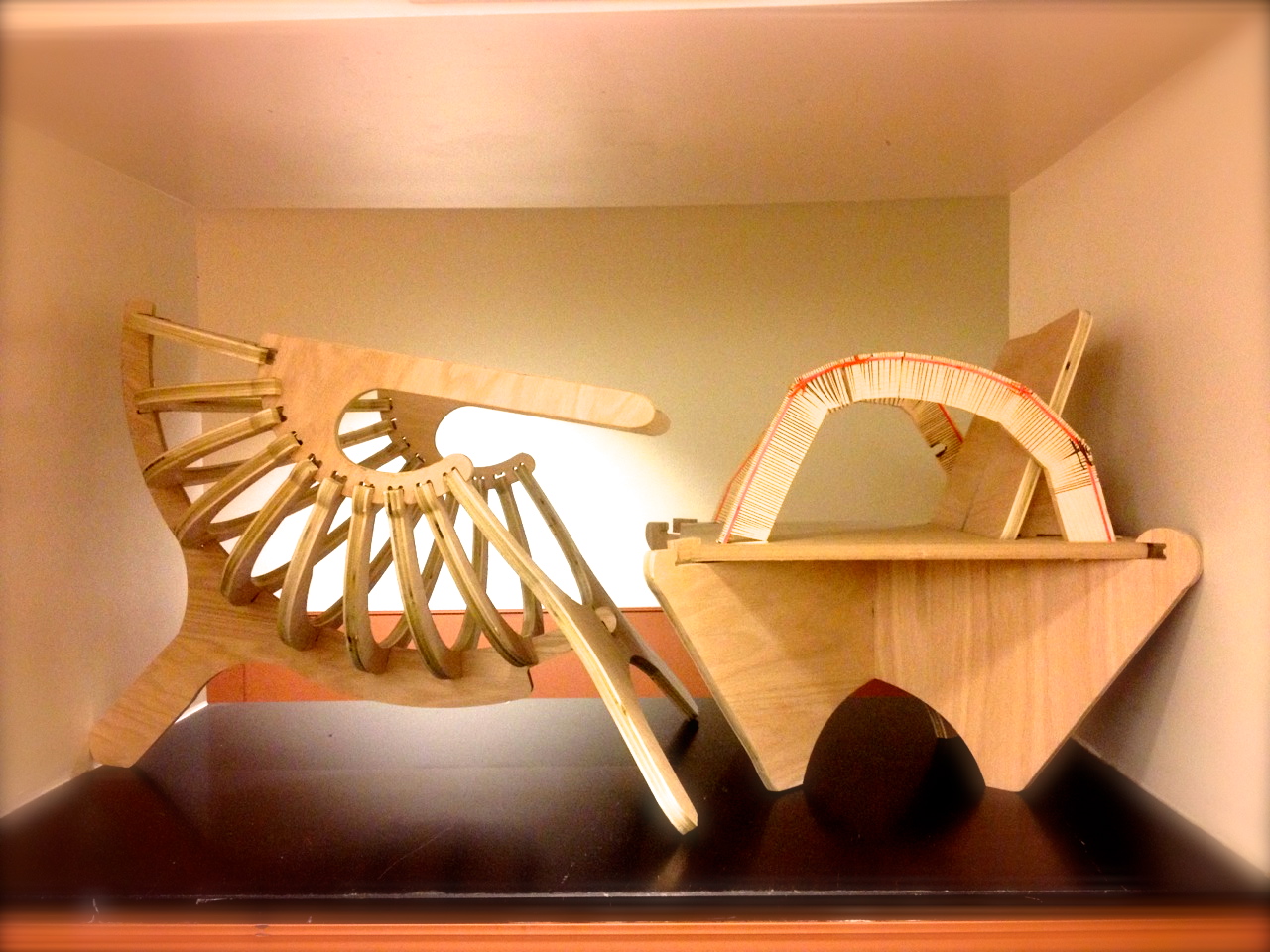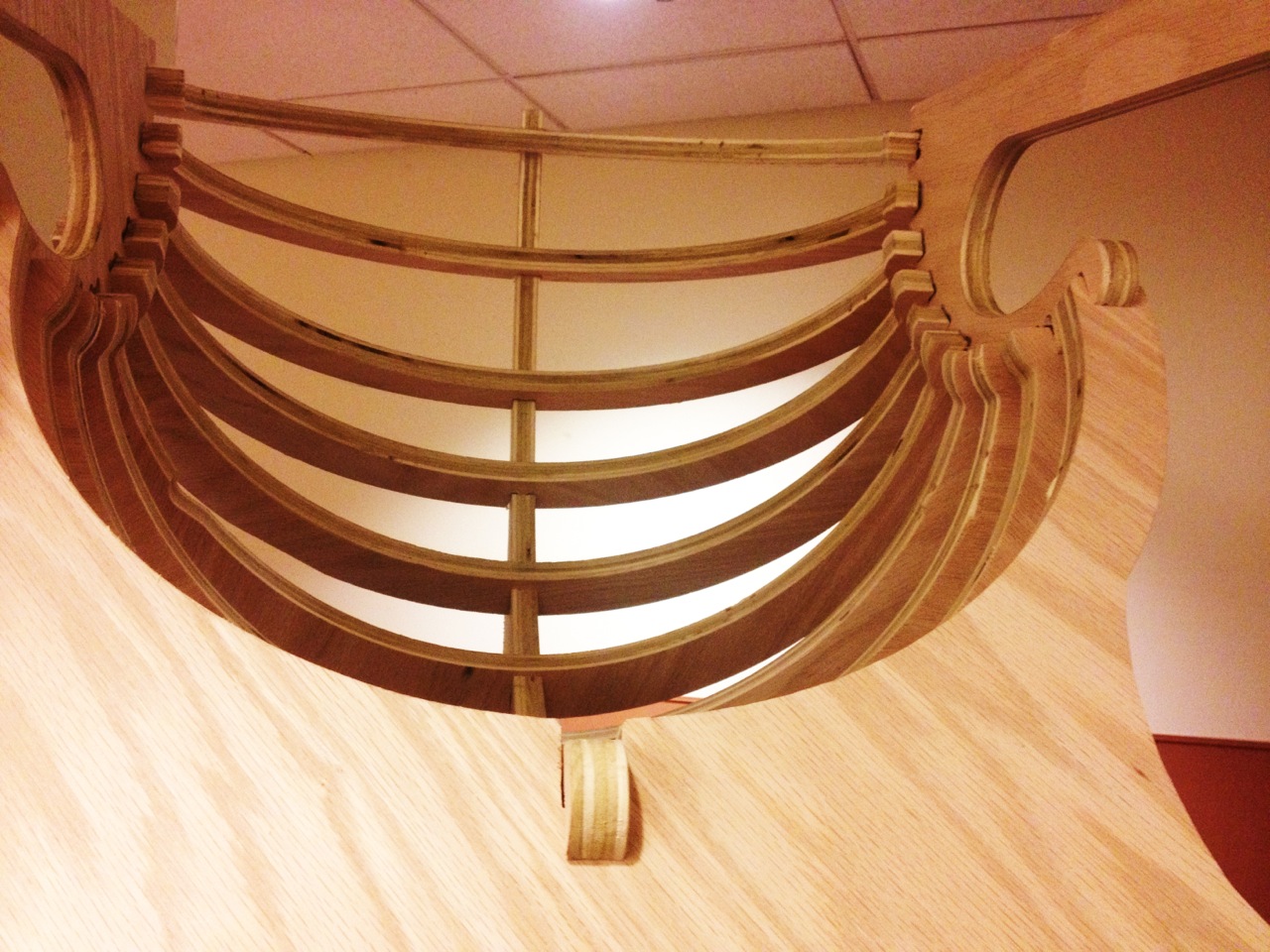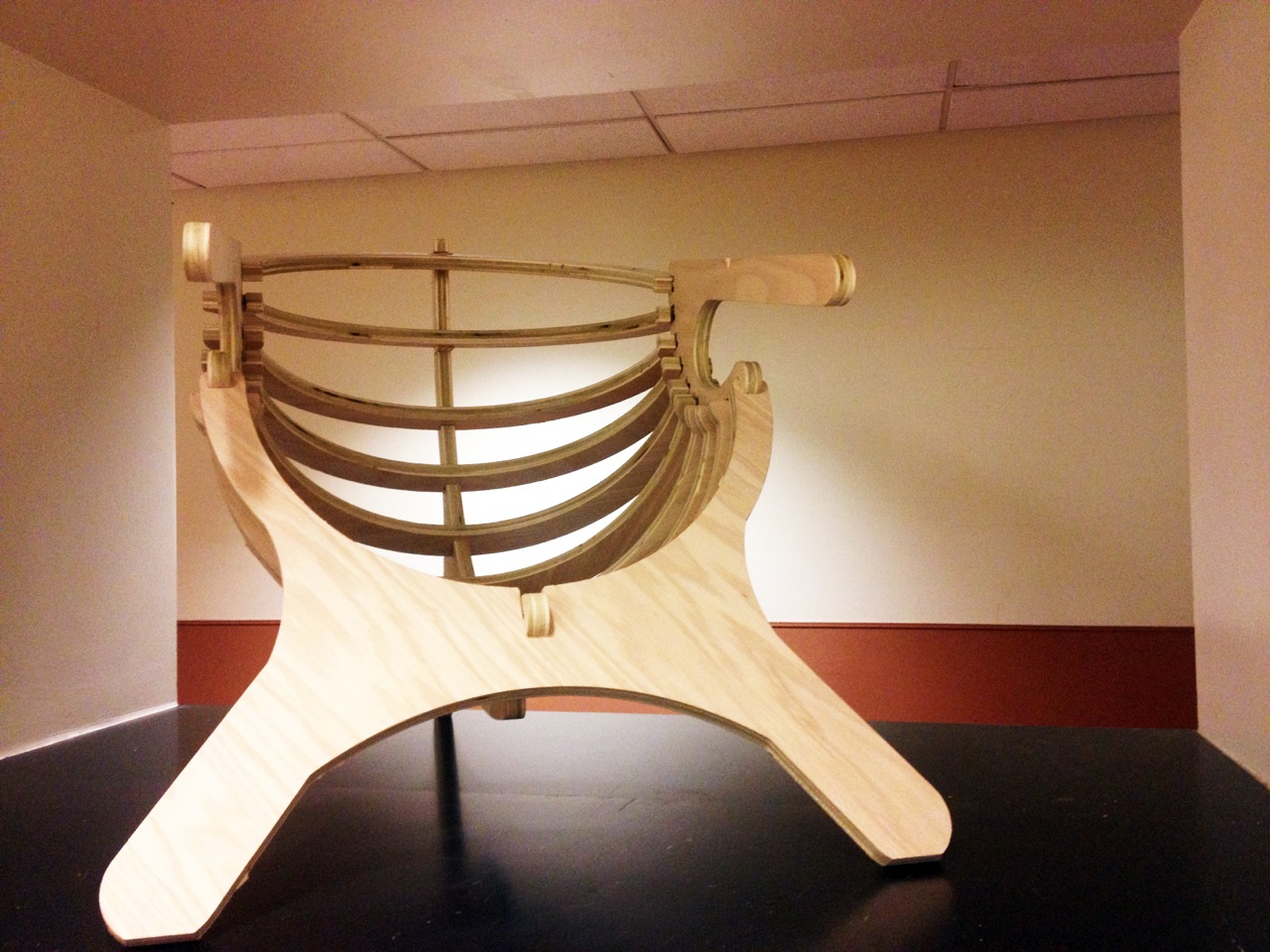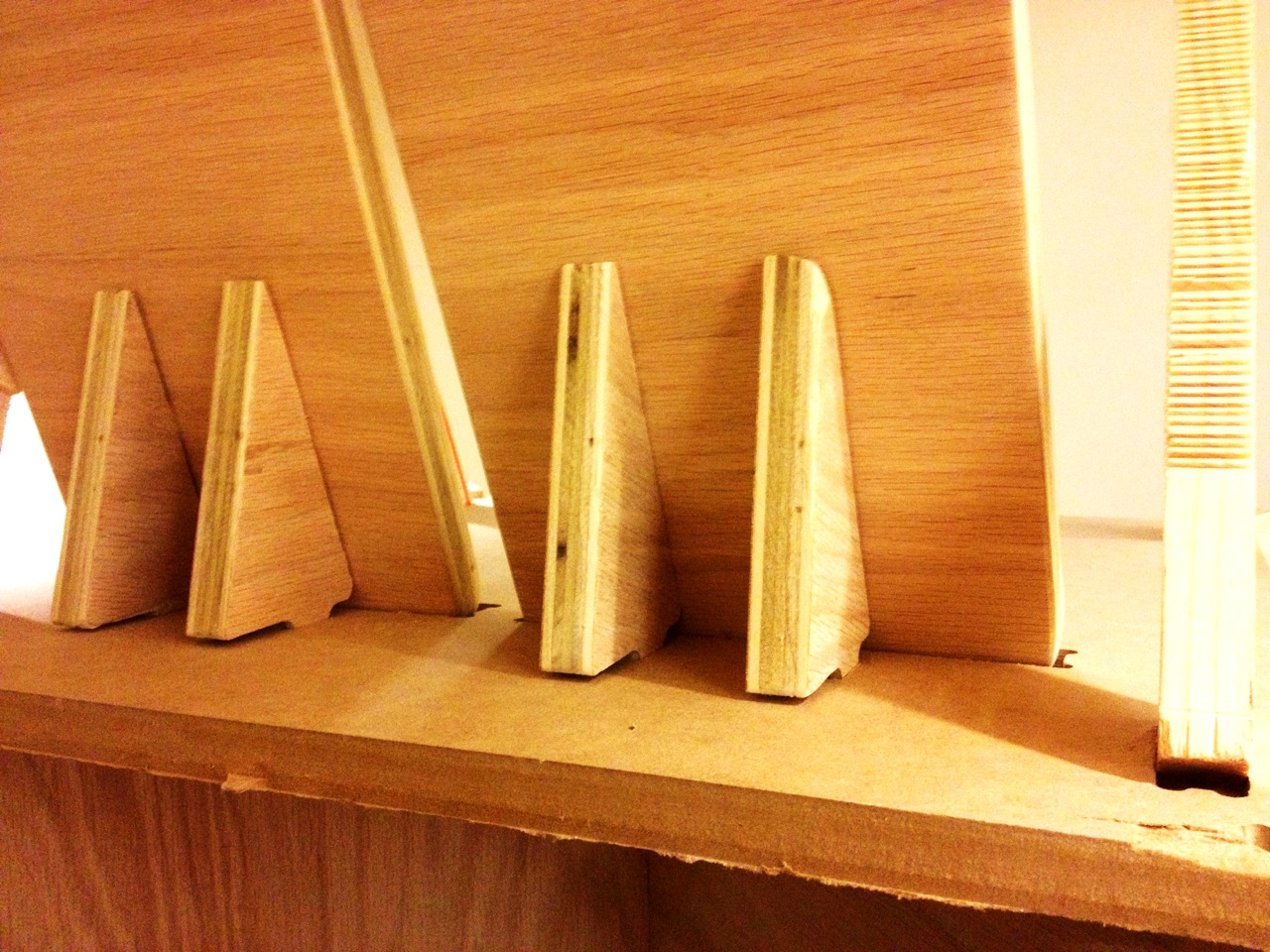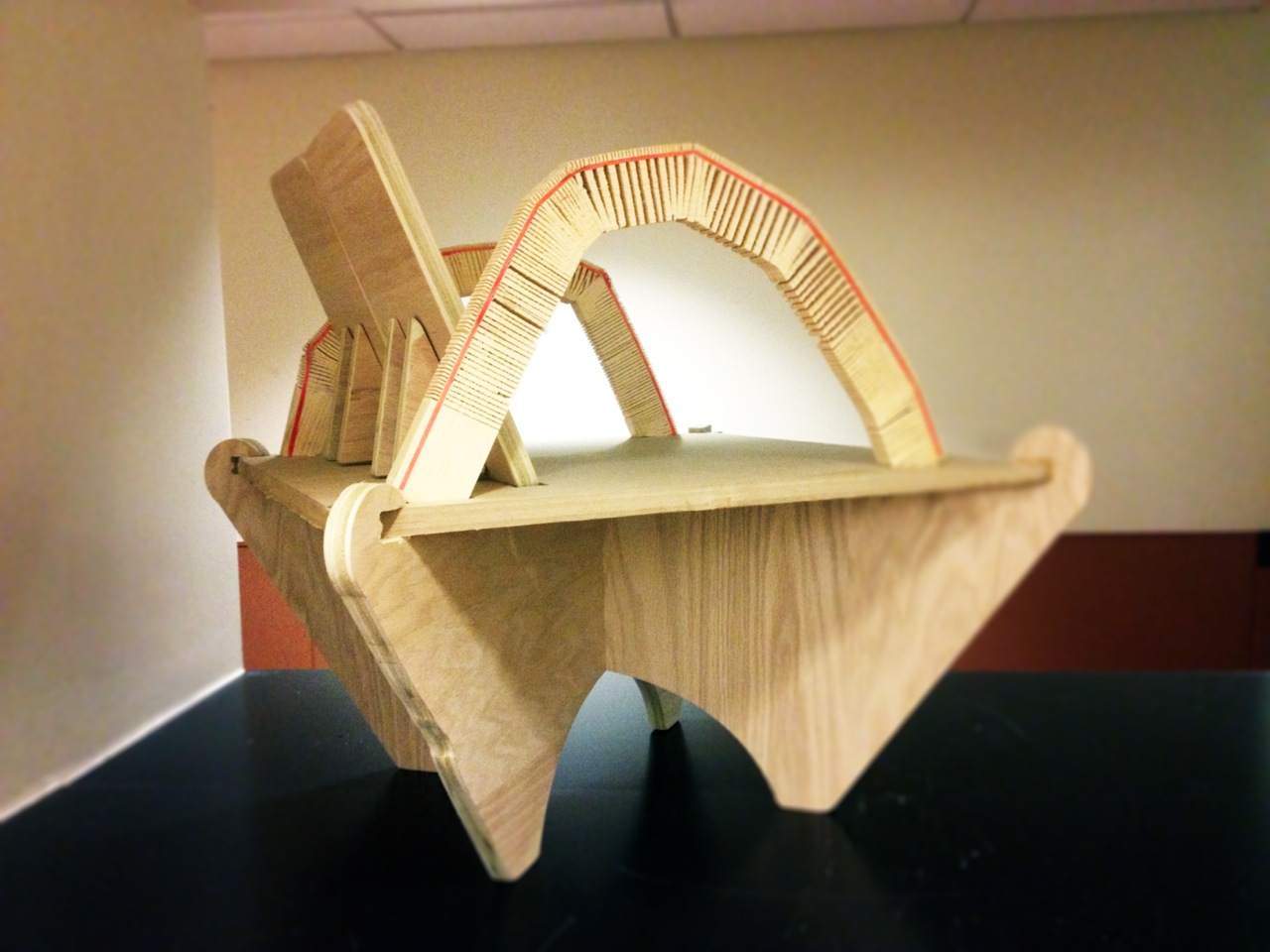Simulated Nature: “MY Family Tree” by Alysia Finger (2013)
My final piece, entitled “MY Family Tree”, was made using a CNC router. I used 3 sheets of .25″ Masonite with various circle cut into them to simulate the look of dividing cells. To achieve this look, I used Nervous System’s Radiolaria application to divide the “cells” corresponding to “1”s in translated binary code. Each sheet represents a member of my direct family: the red layer represents me, the black layer represents my boyfriend, and the silver layer represents my daughter. Our names and birth dates were translated into binary code and used to create the patterns in the piece. When overlaid, the audience can see some similarities and differences in our patterns. I personally appreciate the diagonal string of “0”s that runs through each of our layers. When stacked, the three distinct layers create a complex finished piece. I am able to continue to add layers to this piece as my family grows, hence, it will act as my own variation of a family tree.
This piece is meant to hang in my apartment’s living room as wall art.
I placed the work at my campus’s Biomolecular Engineering department for the in-class critique. I chose this location for a number of reasons. It was conveniently located near the classroom. It mimics the color palette of my piece. And most importantly, Biomolecular Engineering is the “purposeful manipulation of molecules of biological origin”, so the sentiment mimics my method of creating the piece, as well as the theme of the project. I very much appreciate the idea of “purposeful manipulation” in regards to a family tree. I have always hated family trees, because the family tree I grew up with was so screwed up and misleading. Biological relation means little to me because you can’t choose the family you were born into or who chose to stay a part of your family. Most of the people I would consider family wouldn’t necessary be a part of my family tree because we aren’t related by blood or even marriage. So beginning my own family tree through a piece like this is pretty meaningful, because I have purposefully placed these people in my life.

